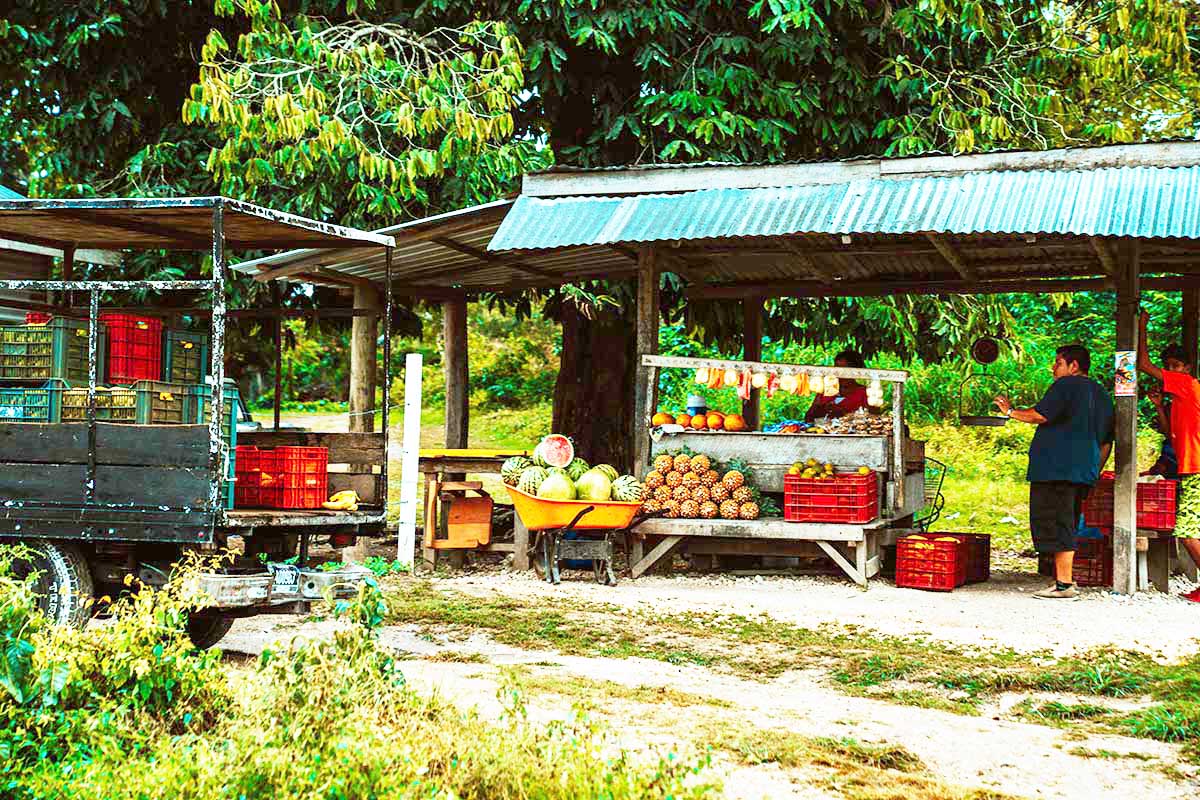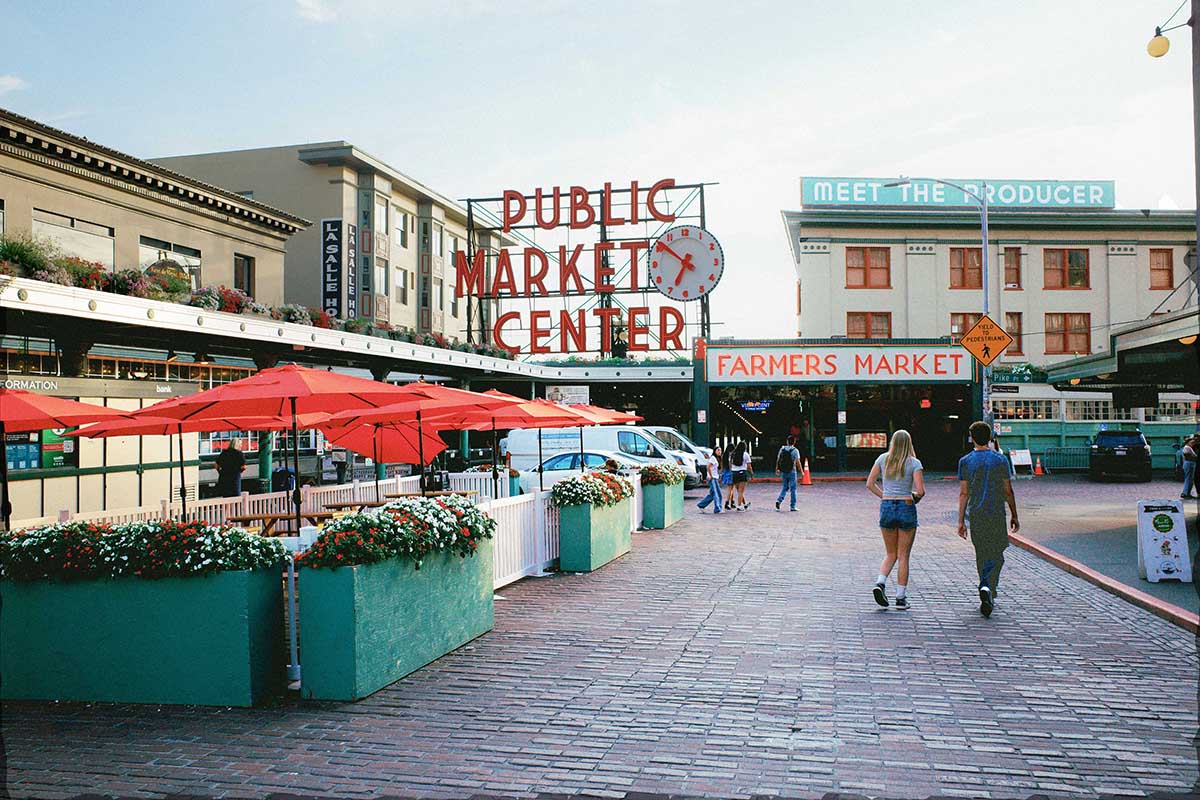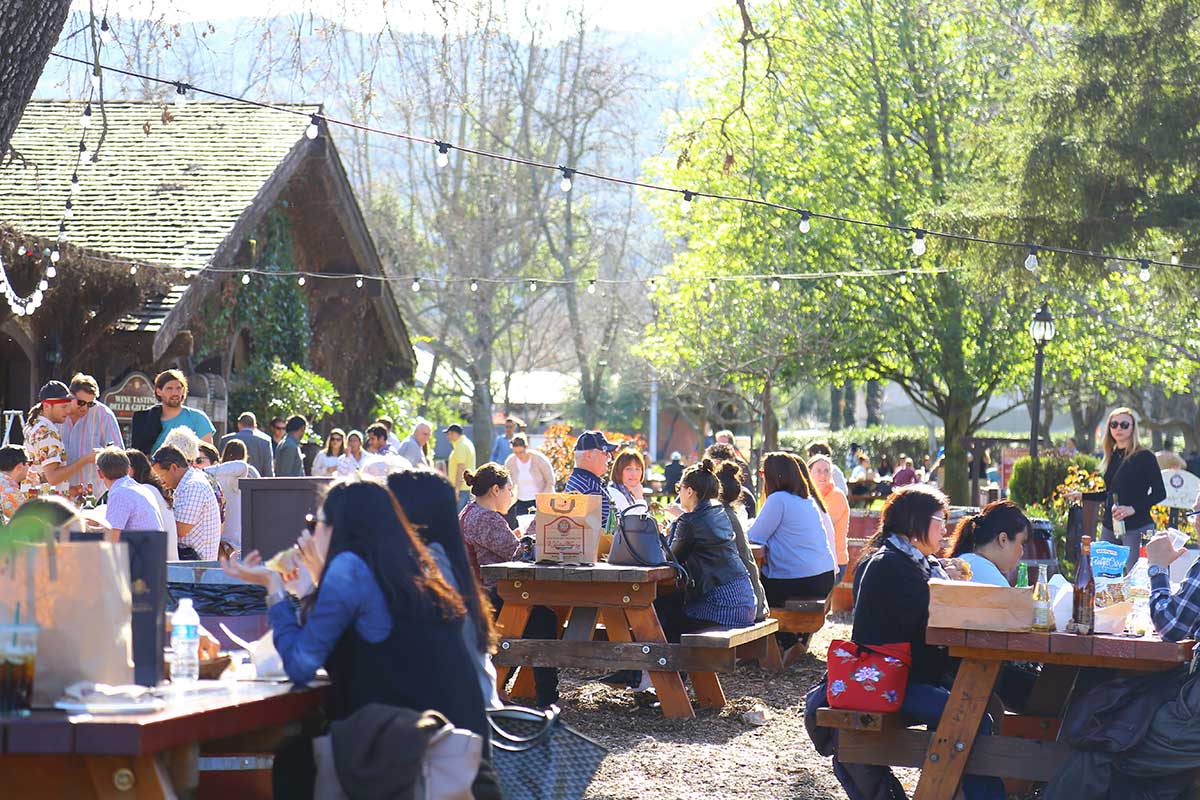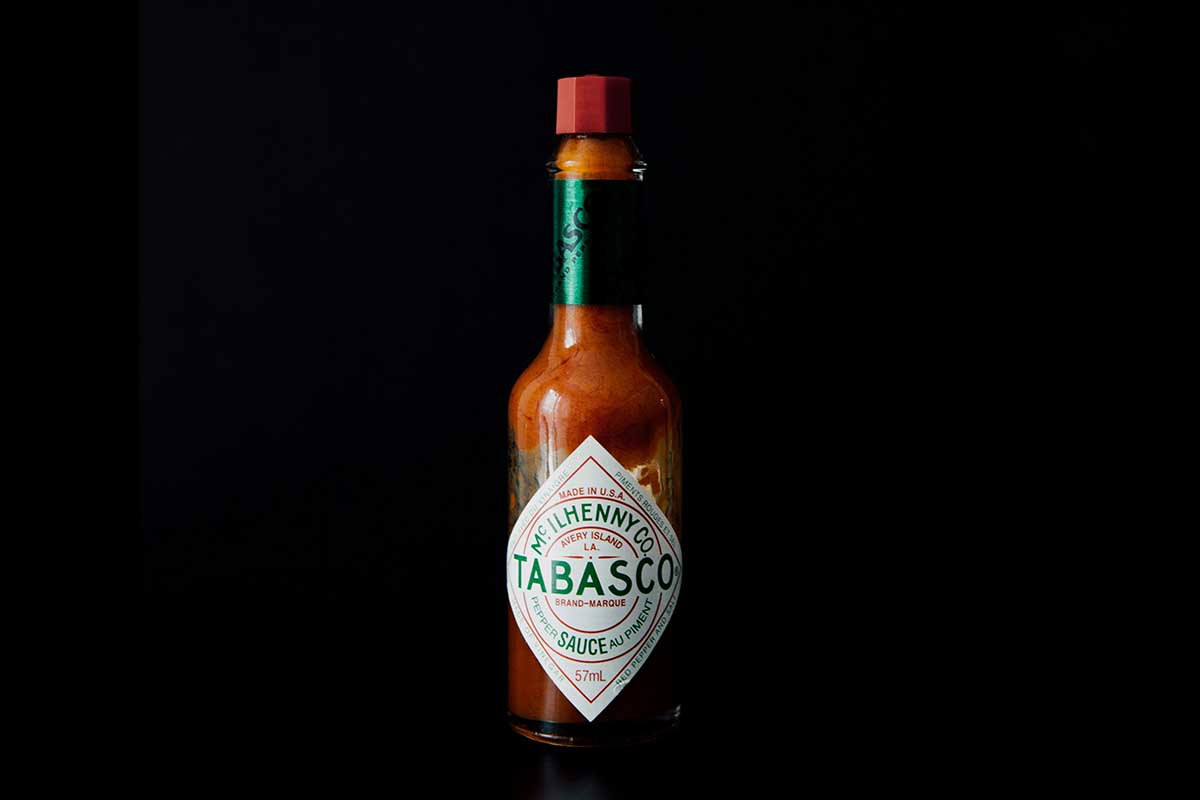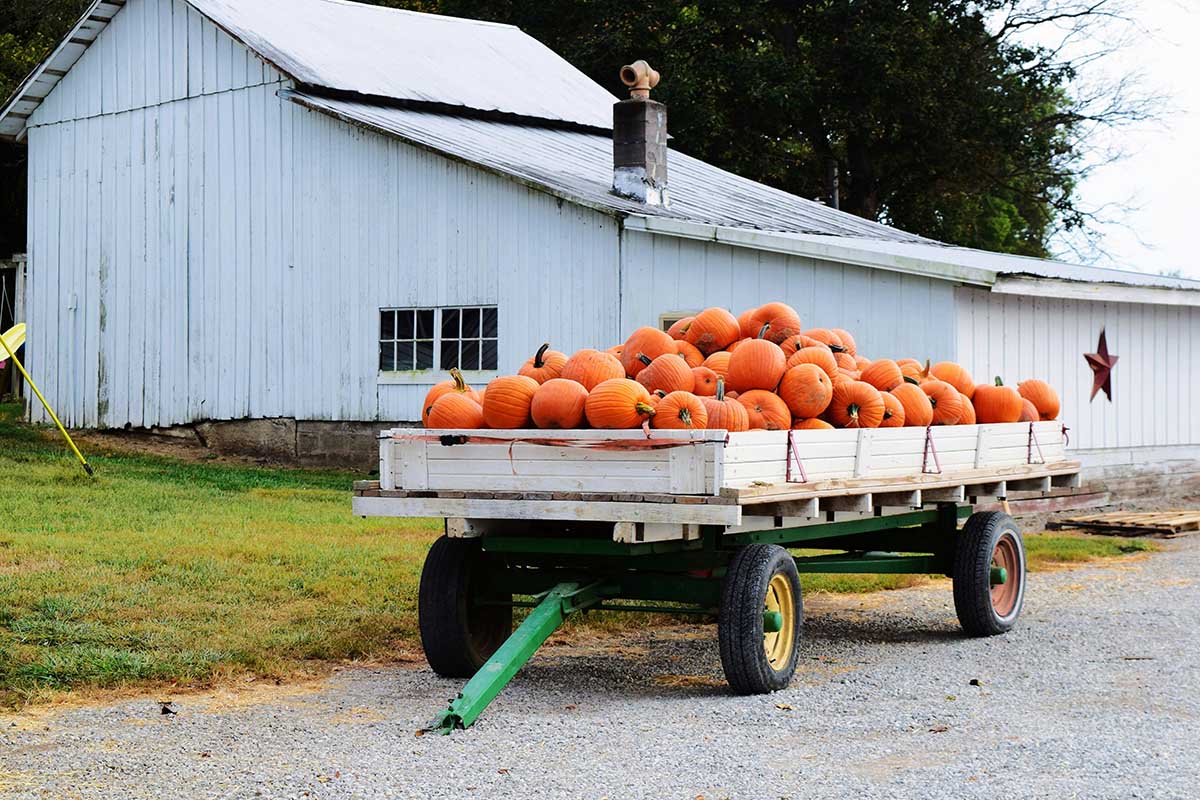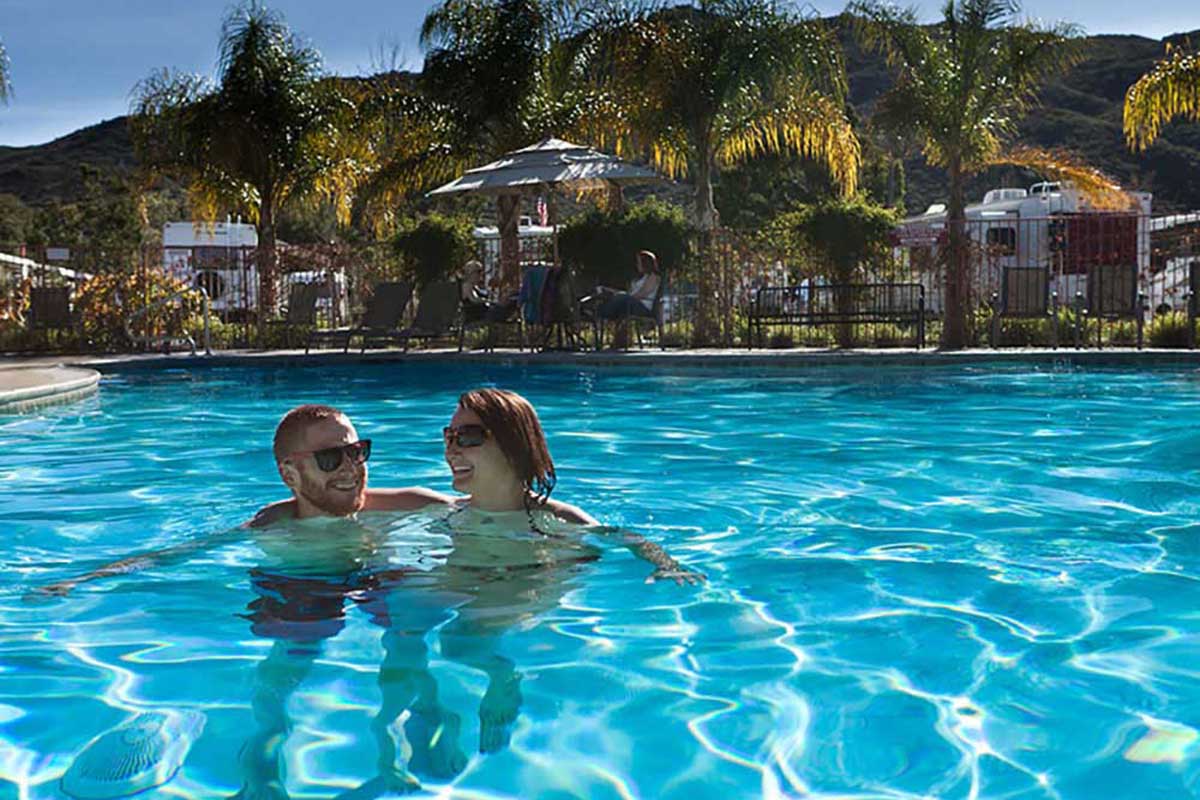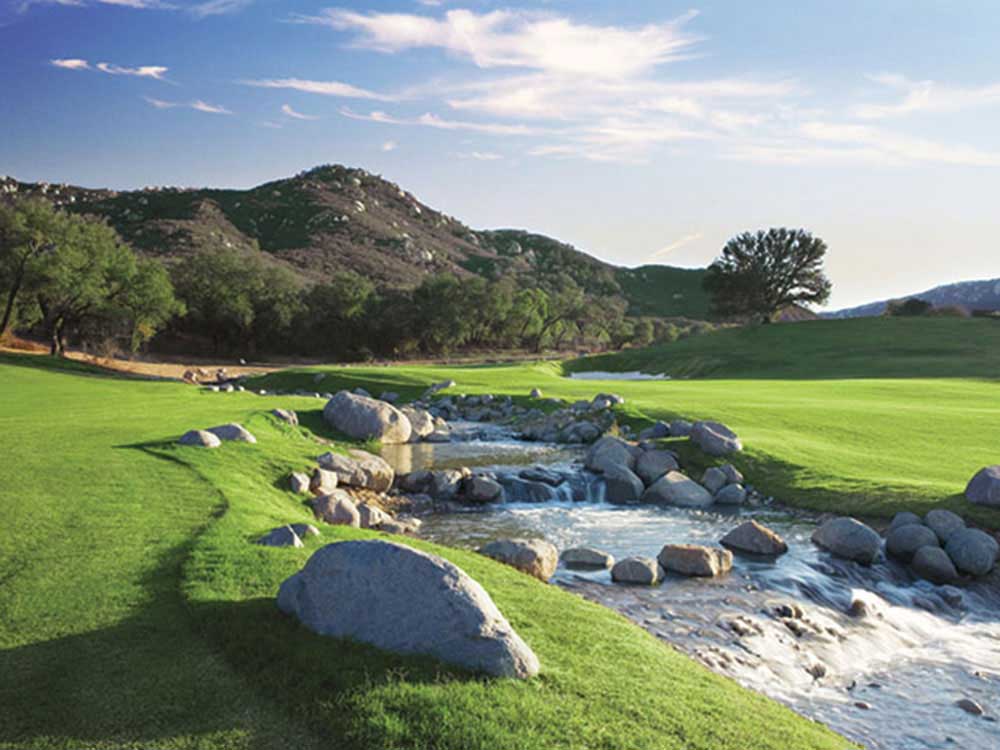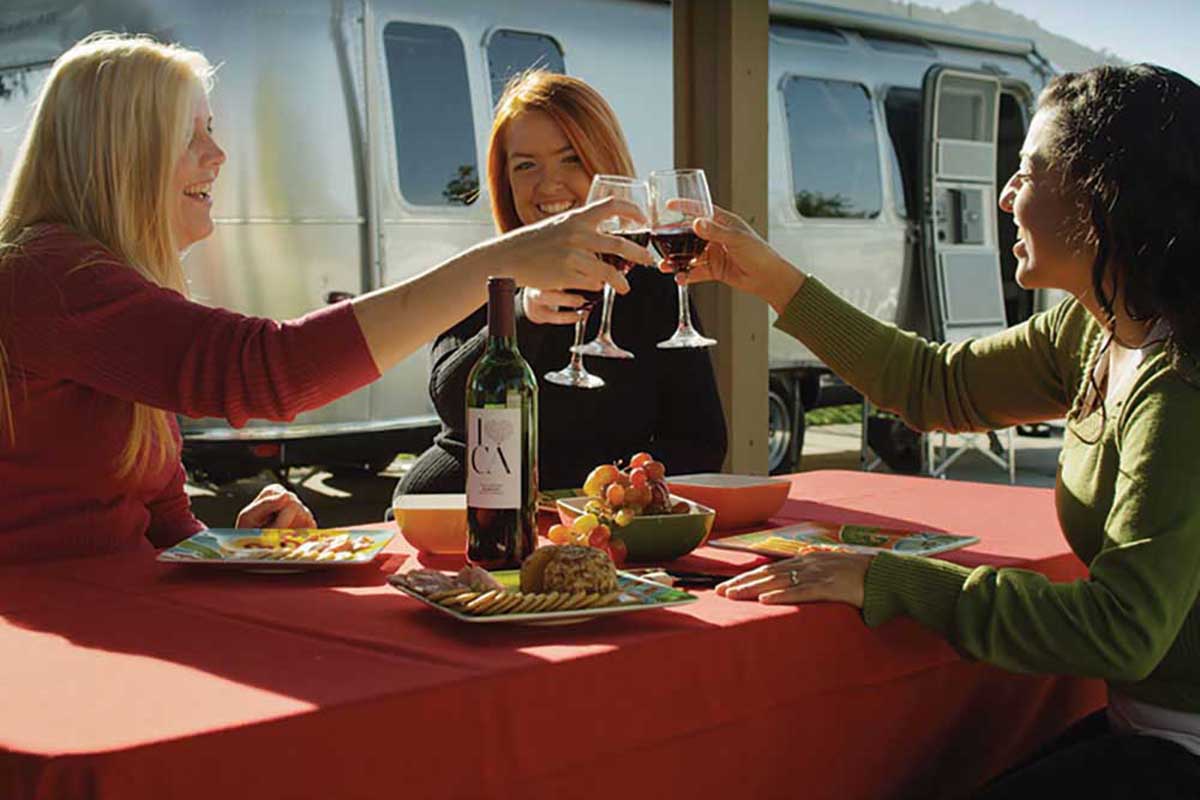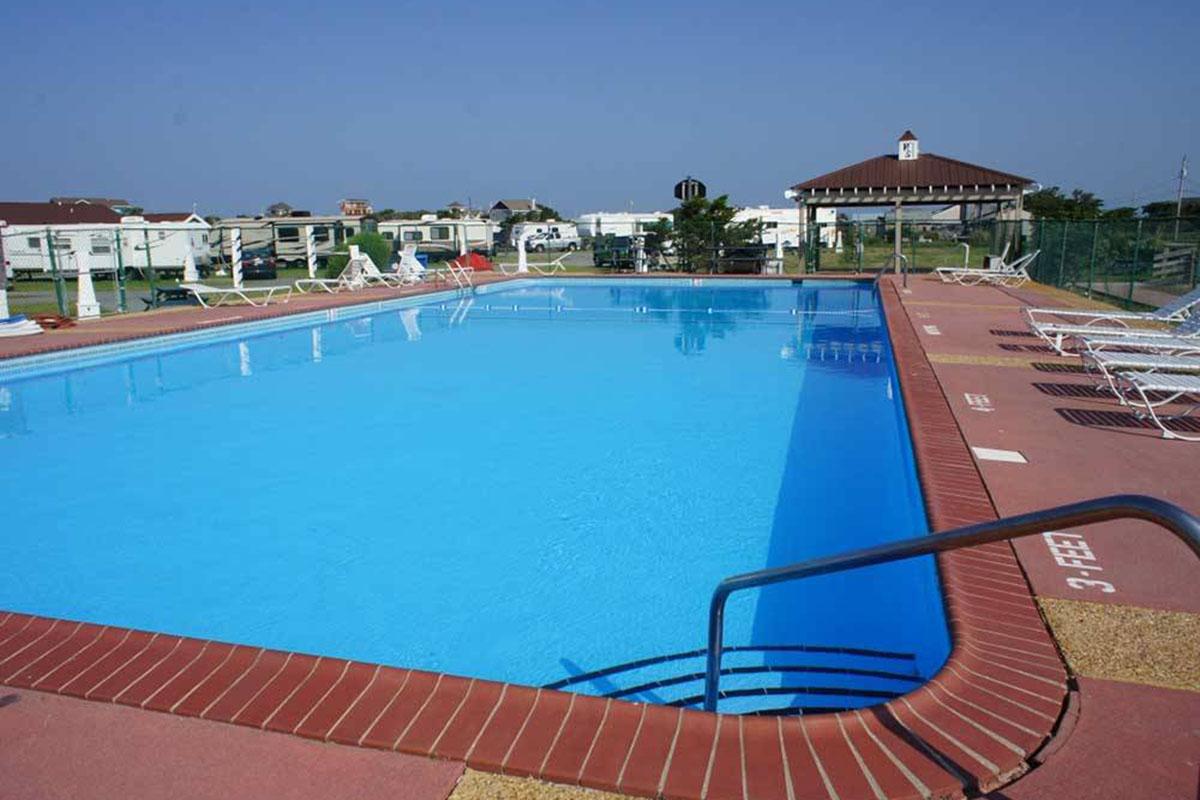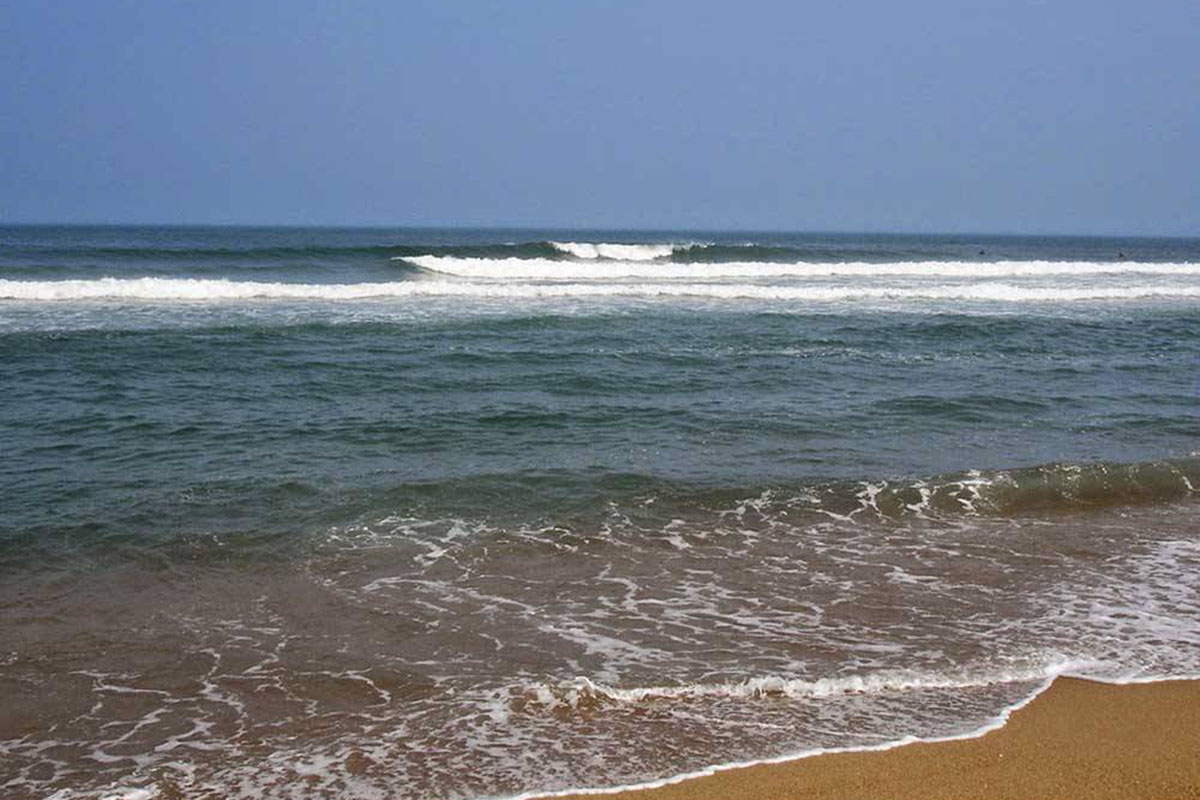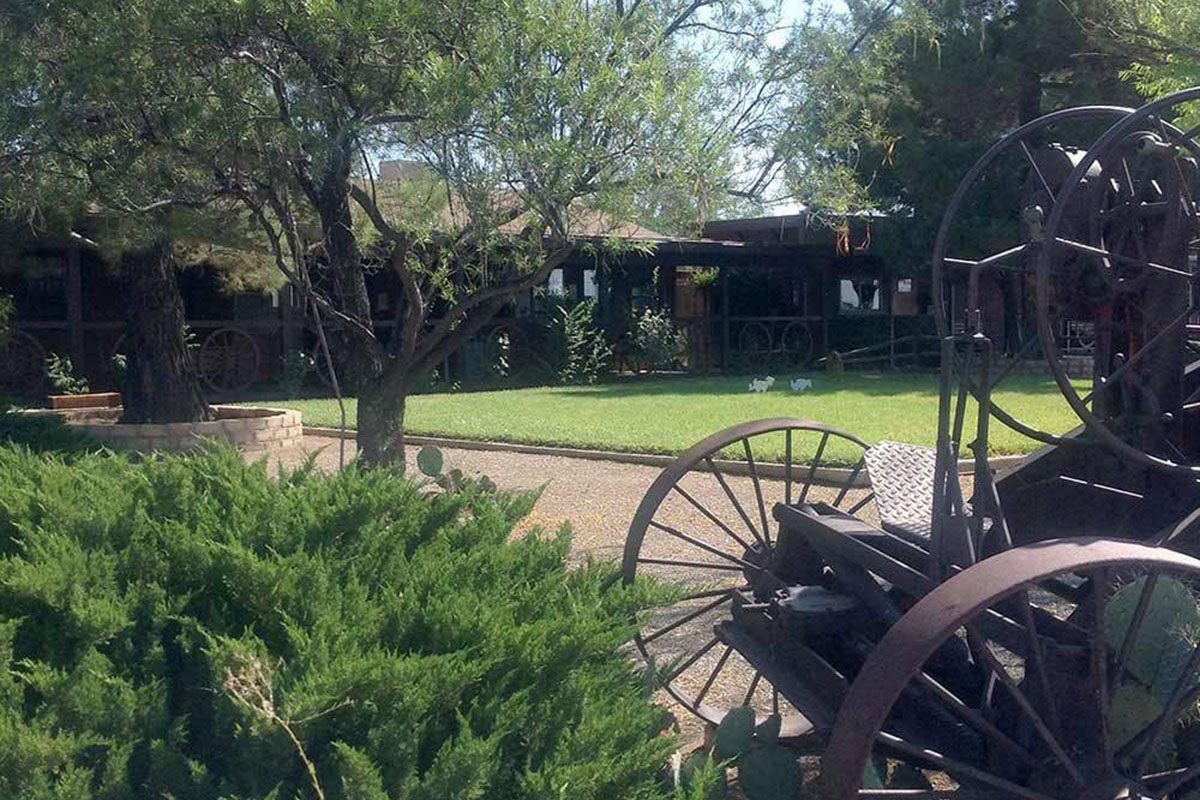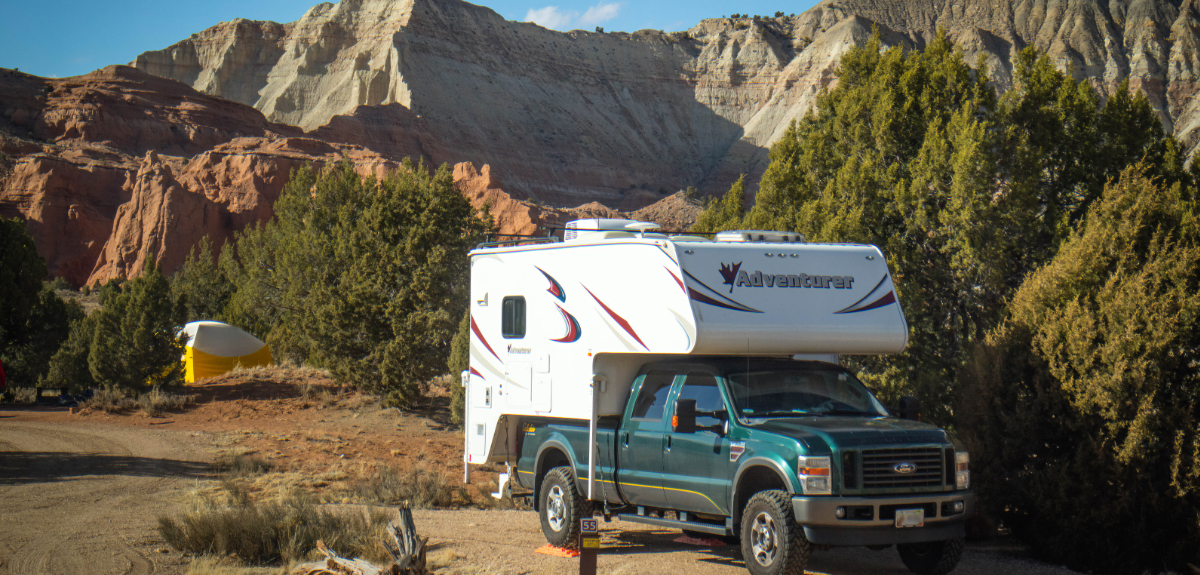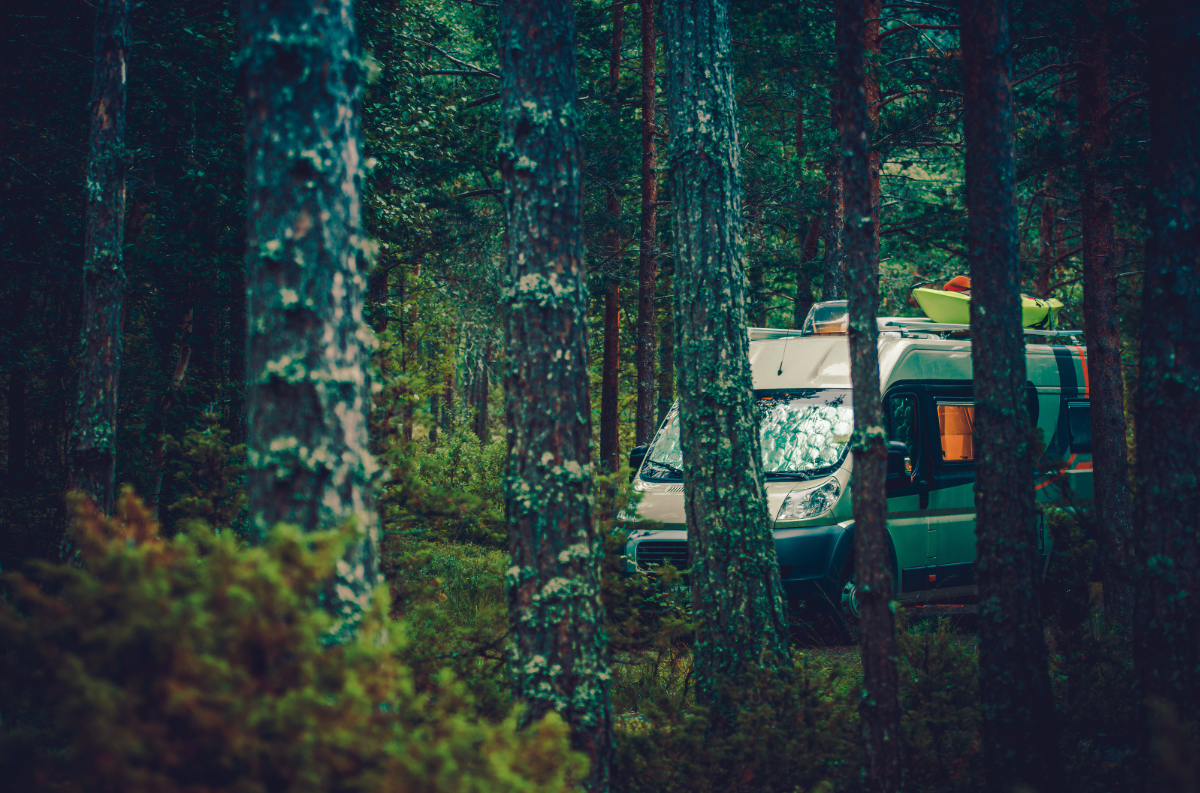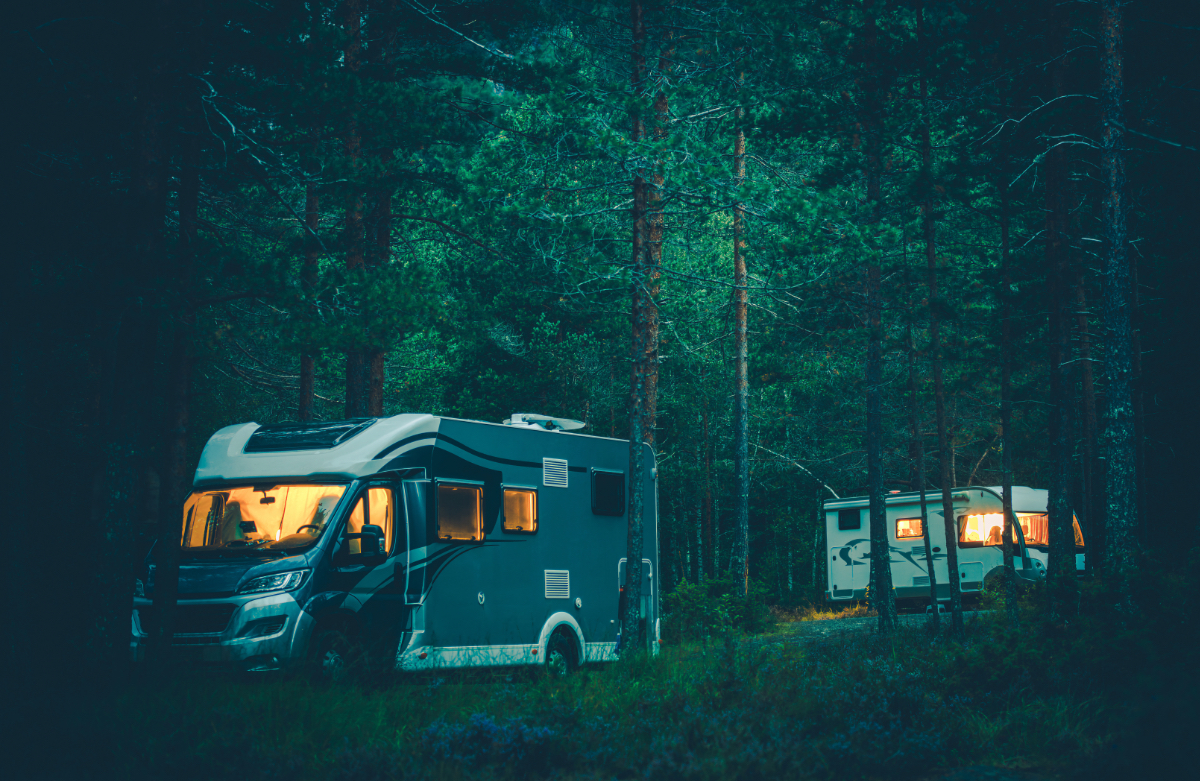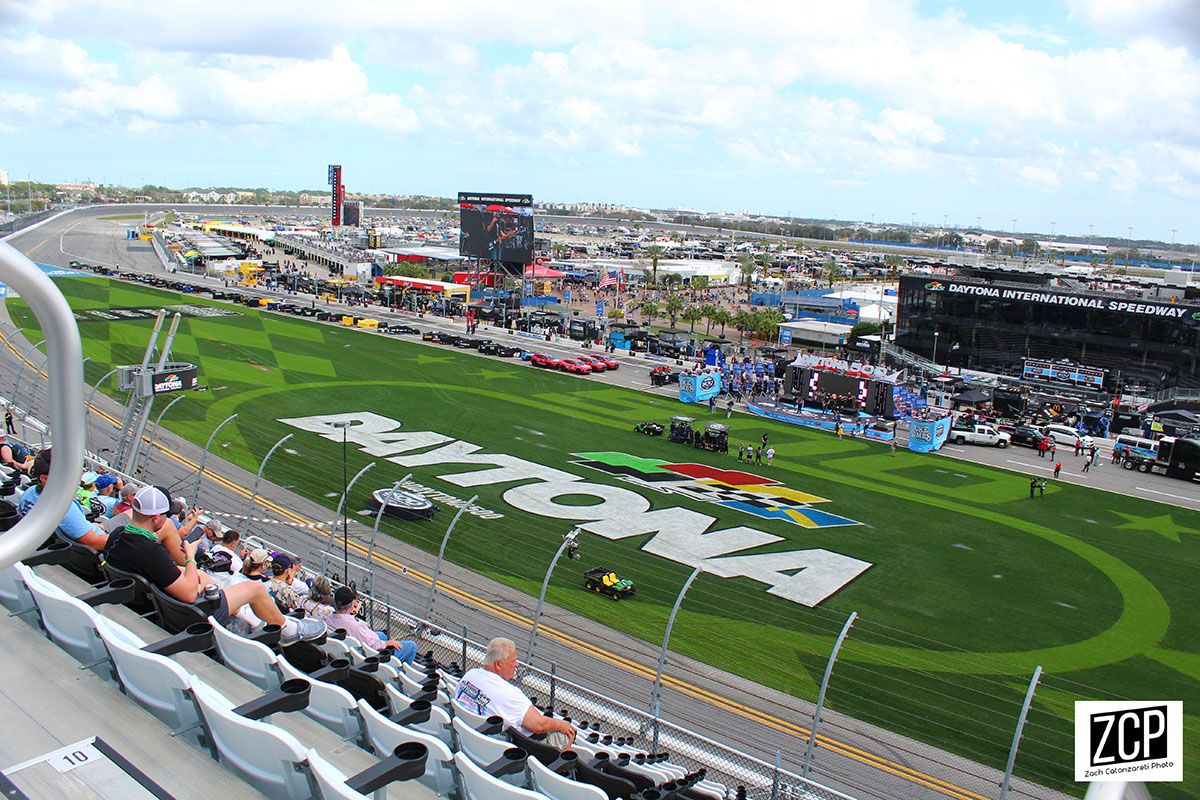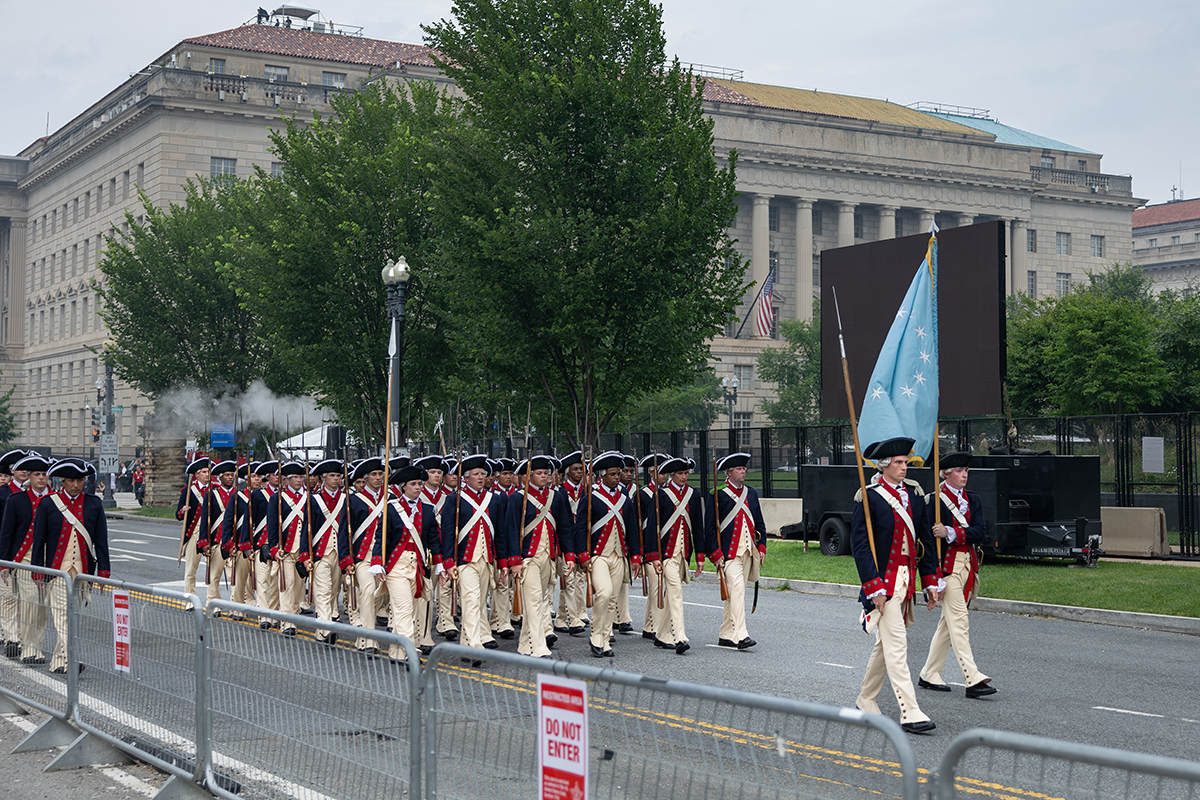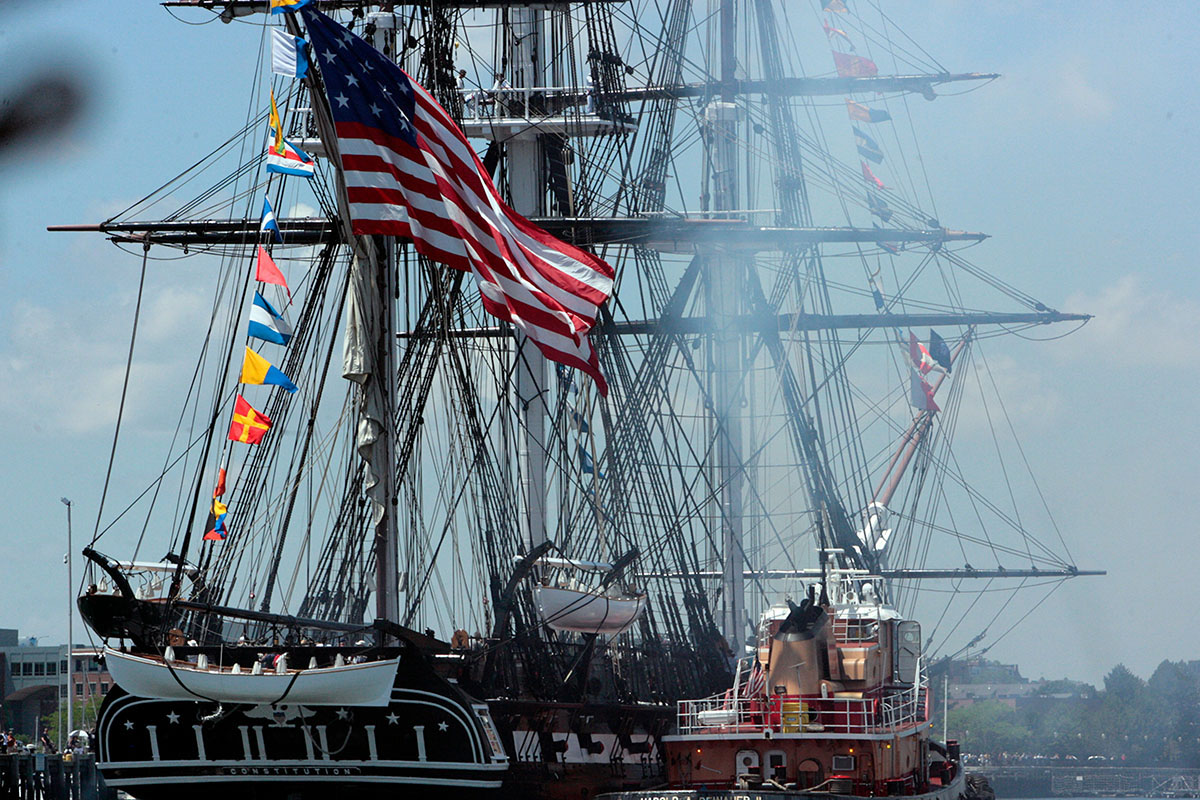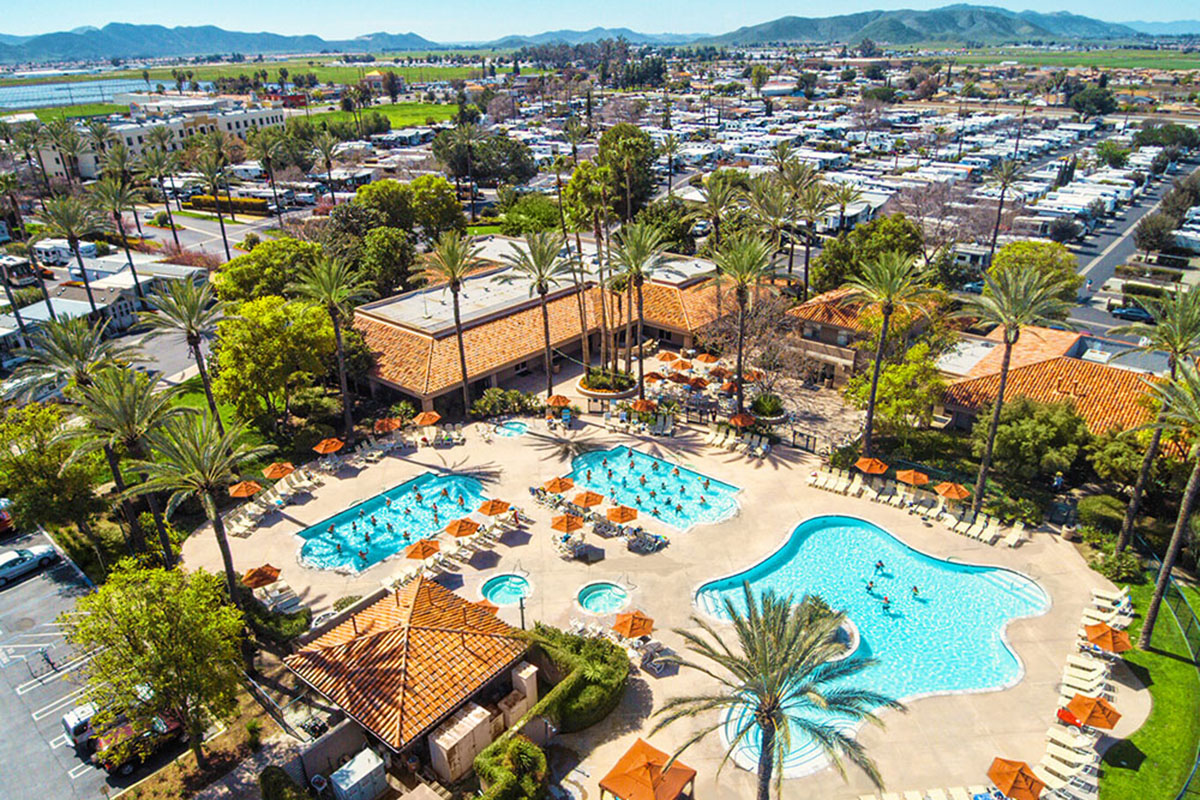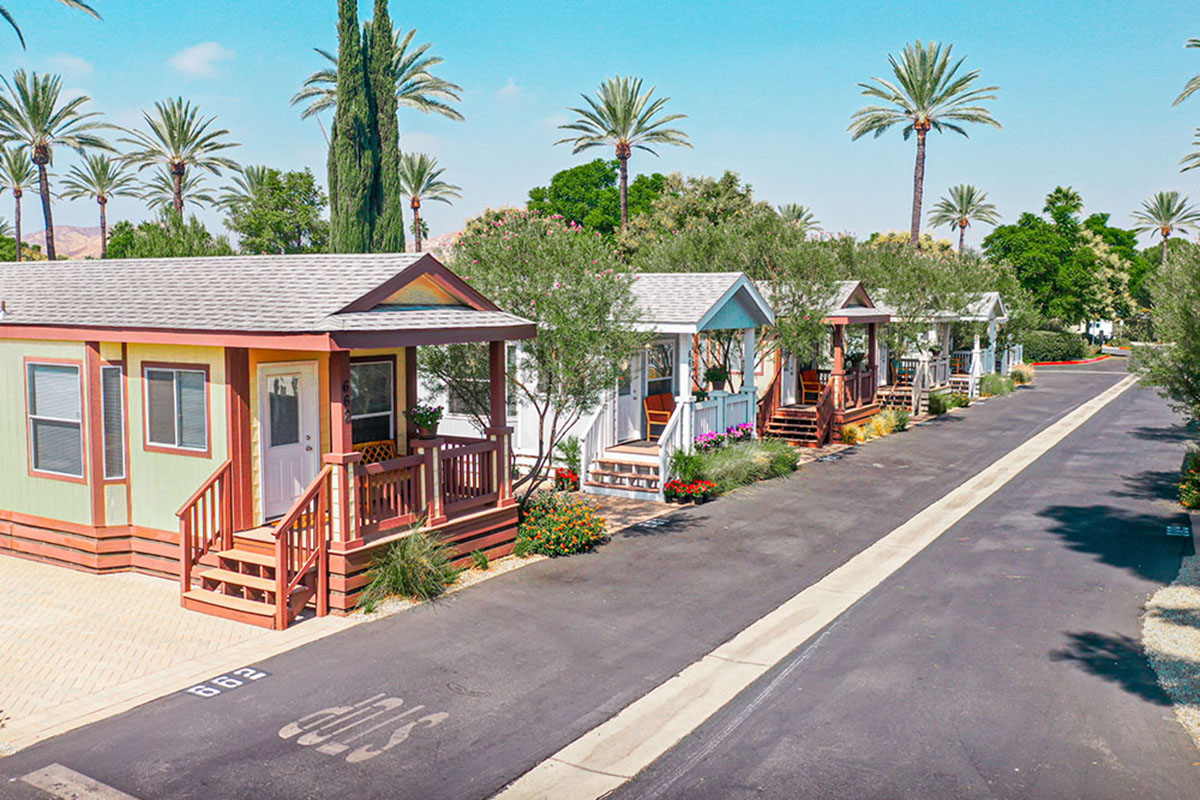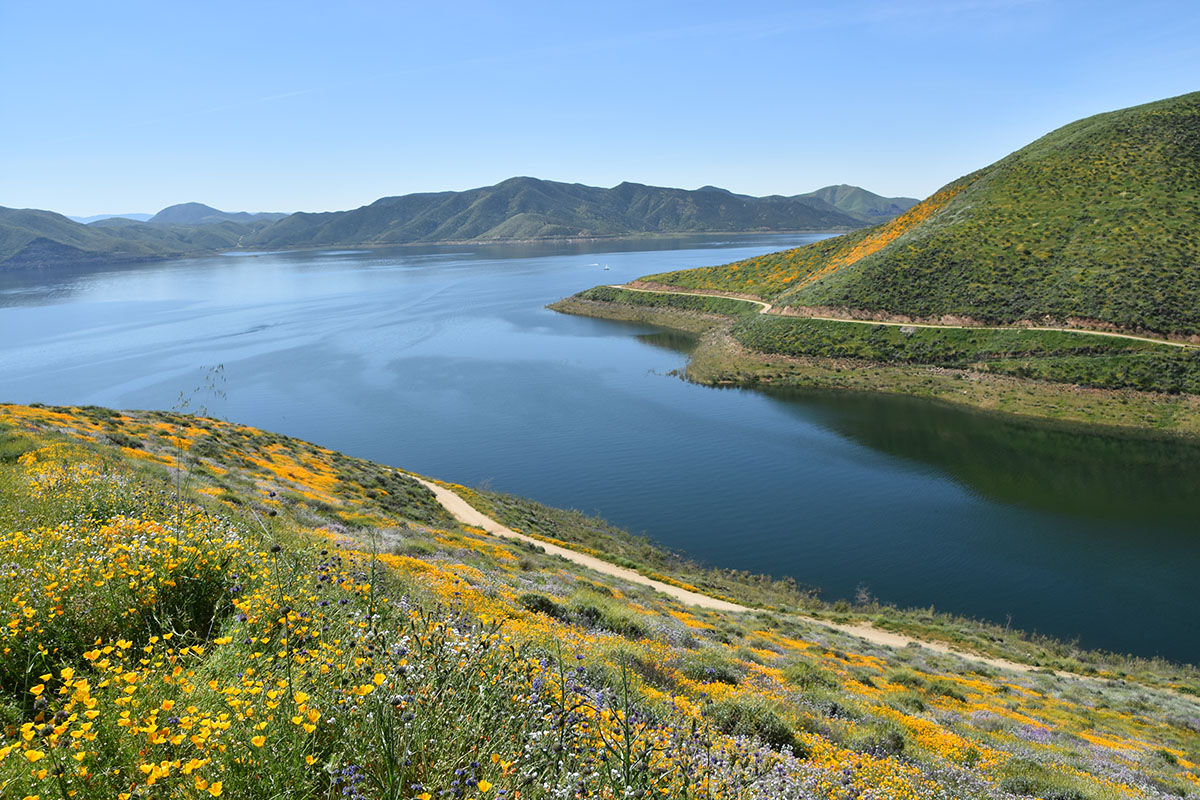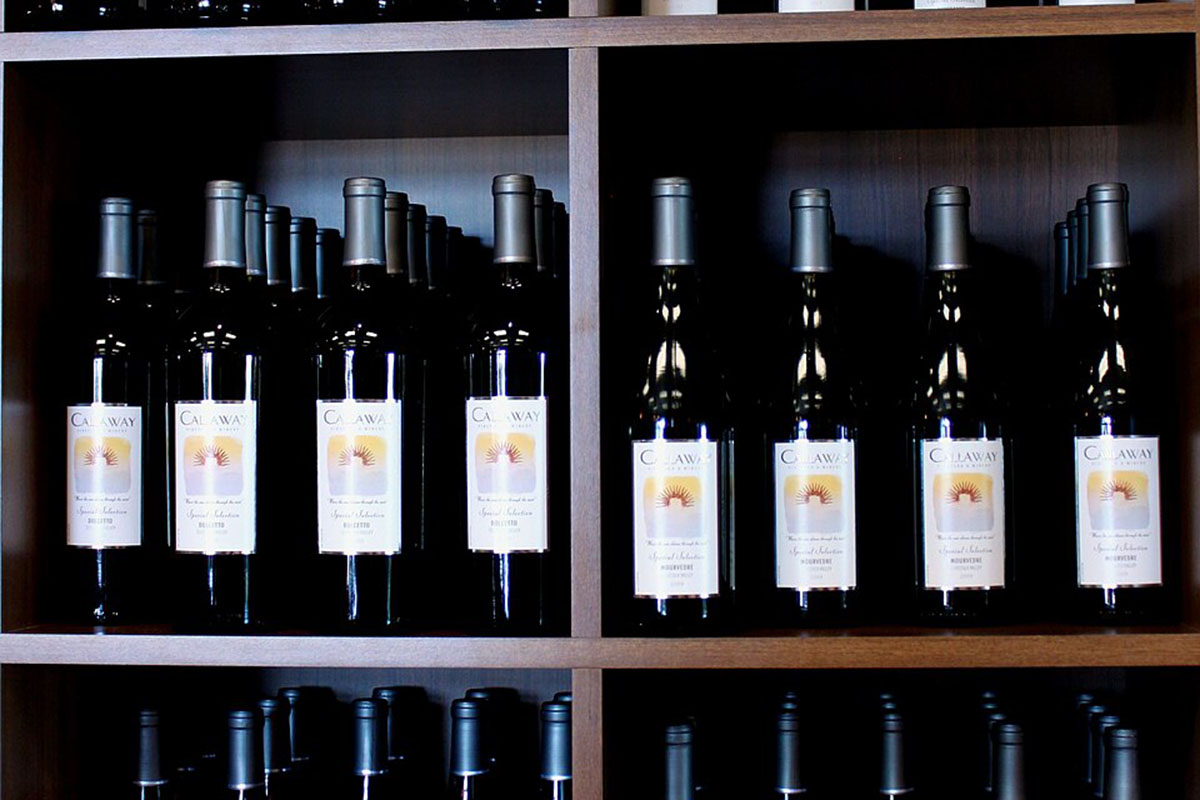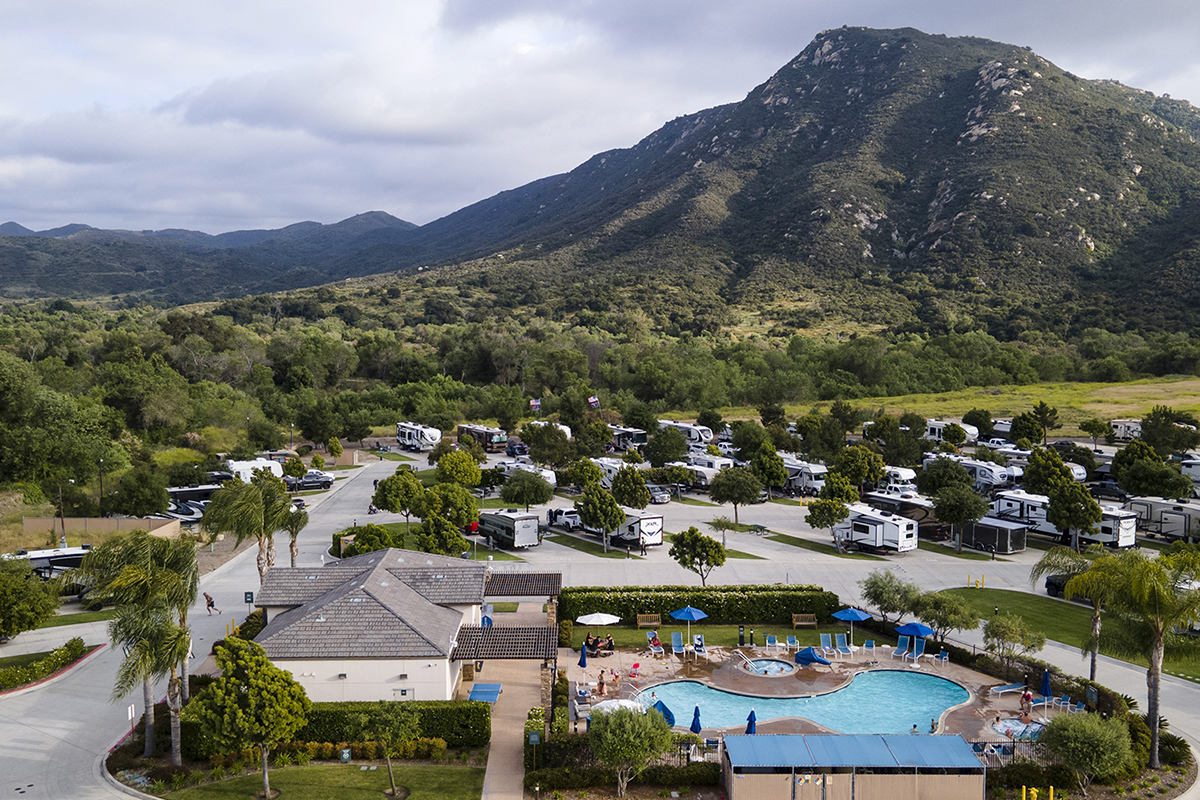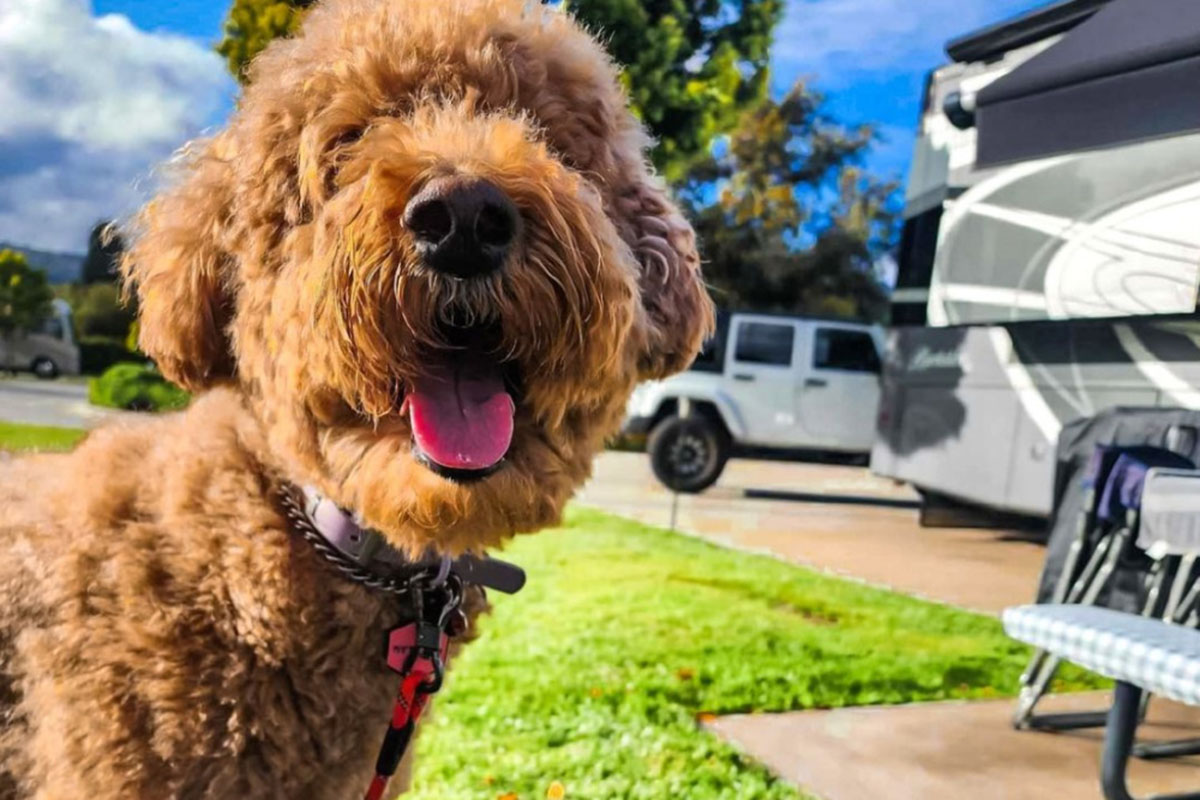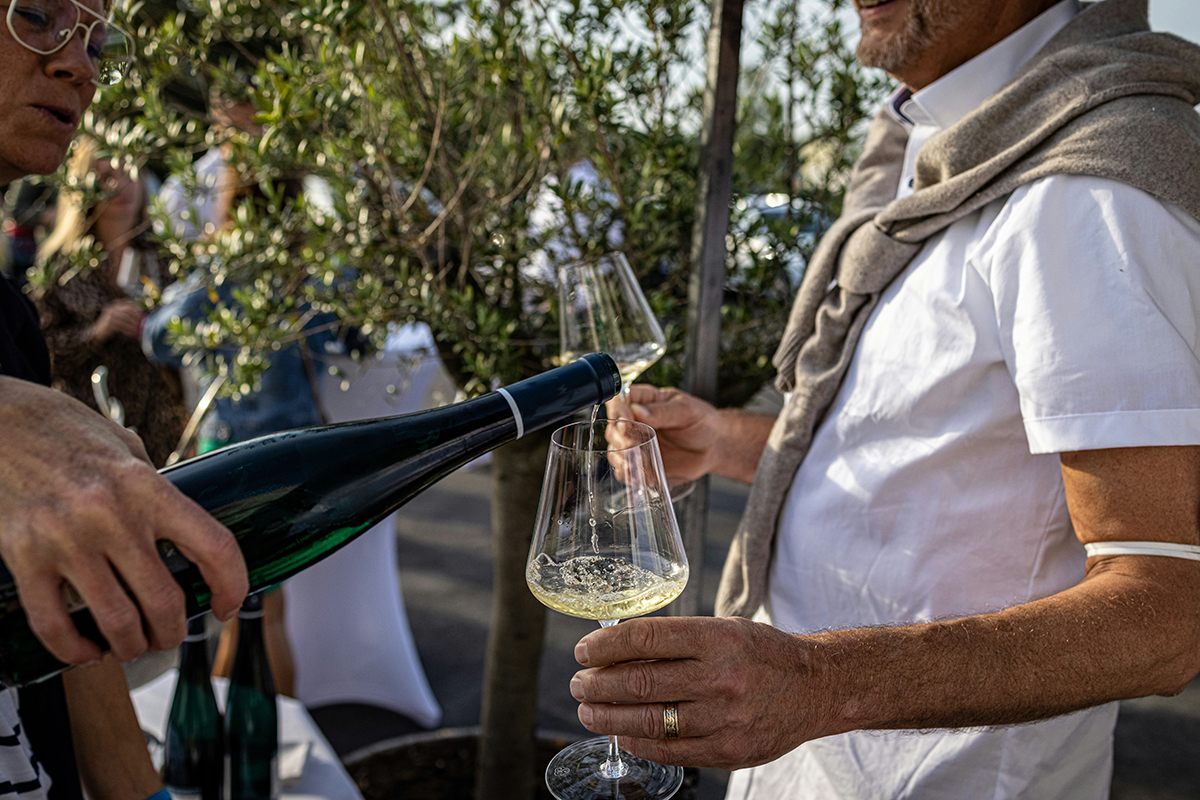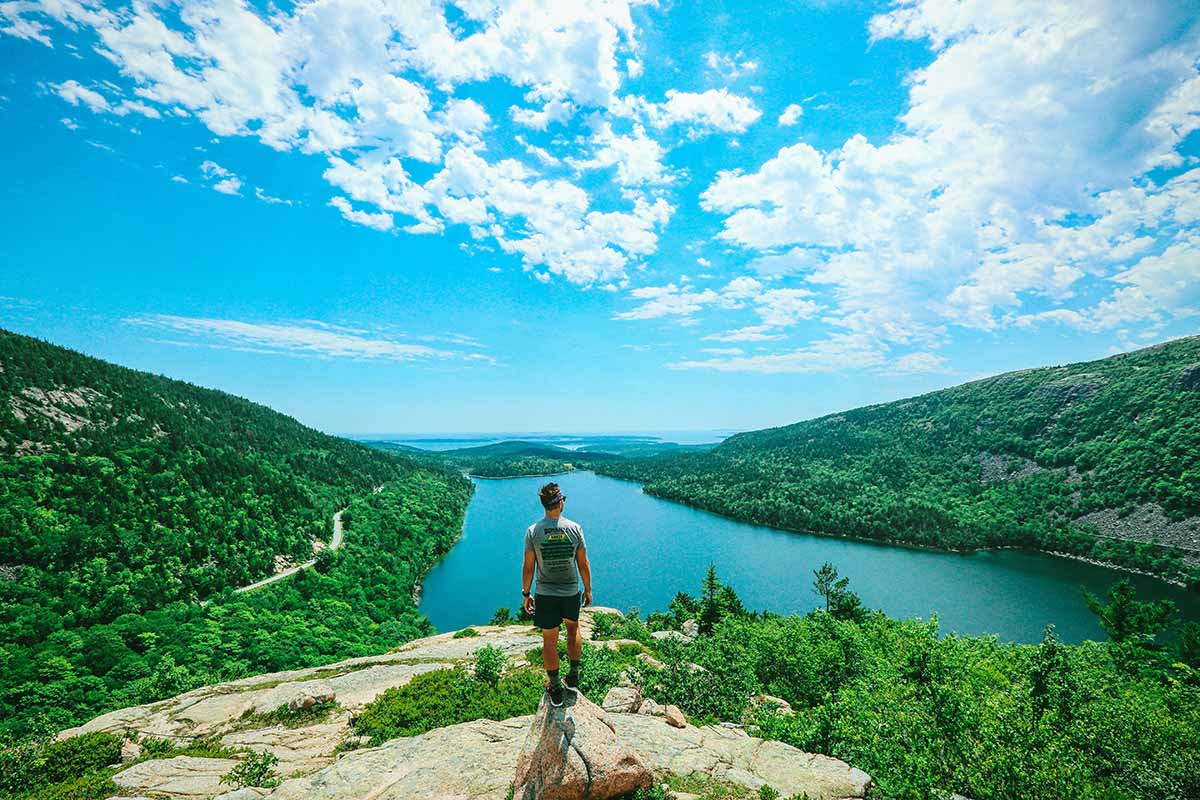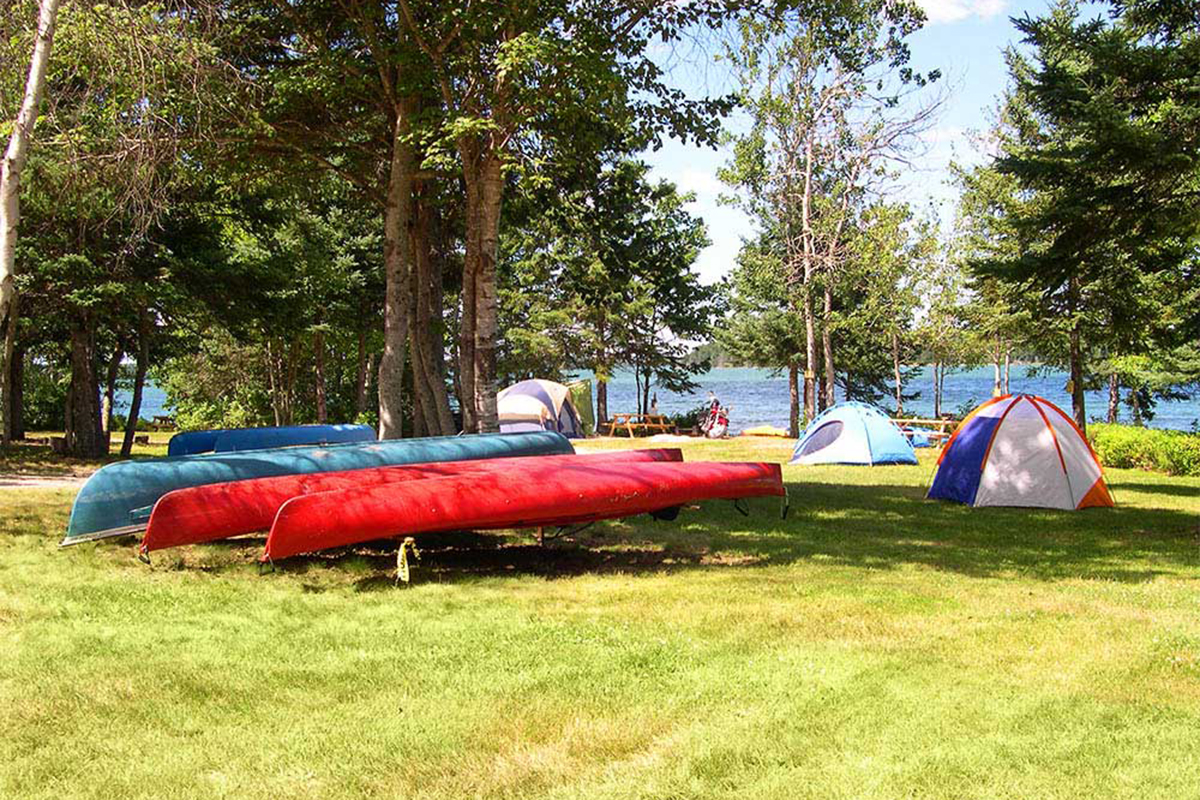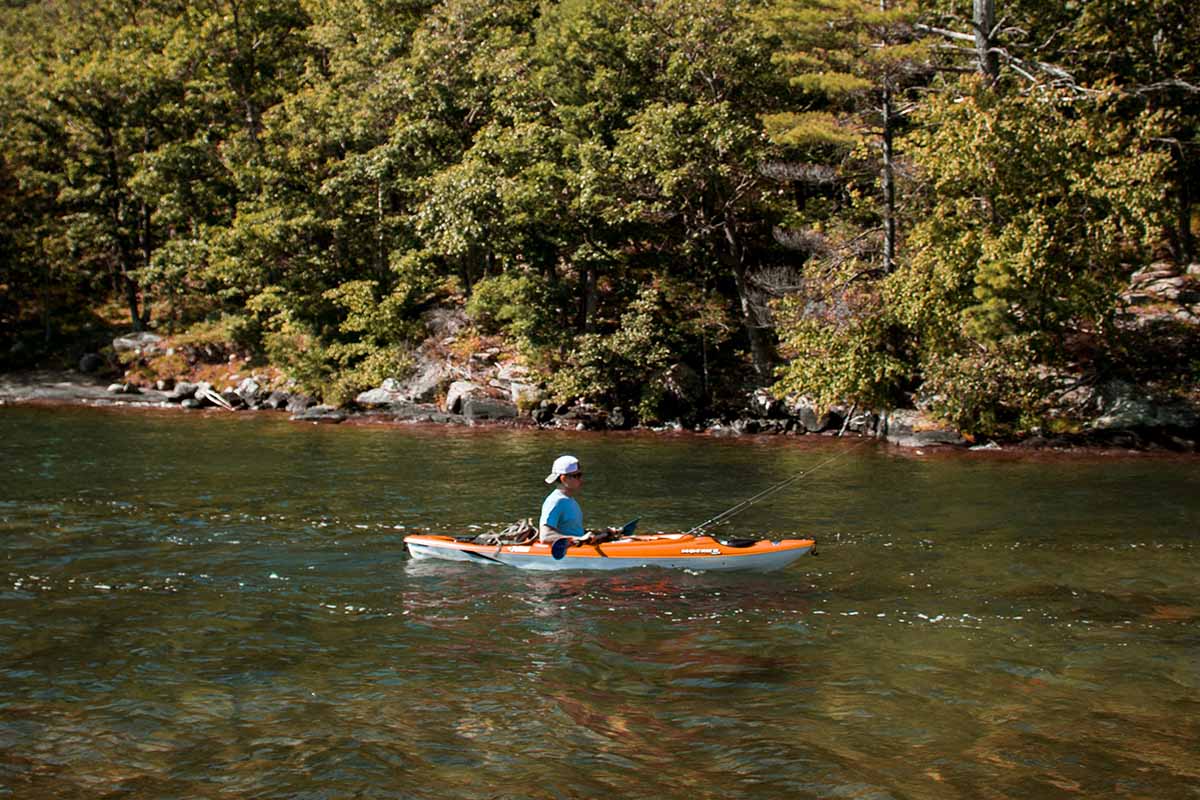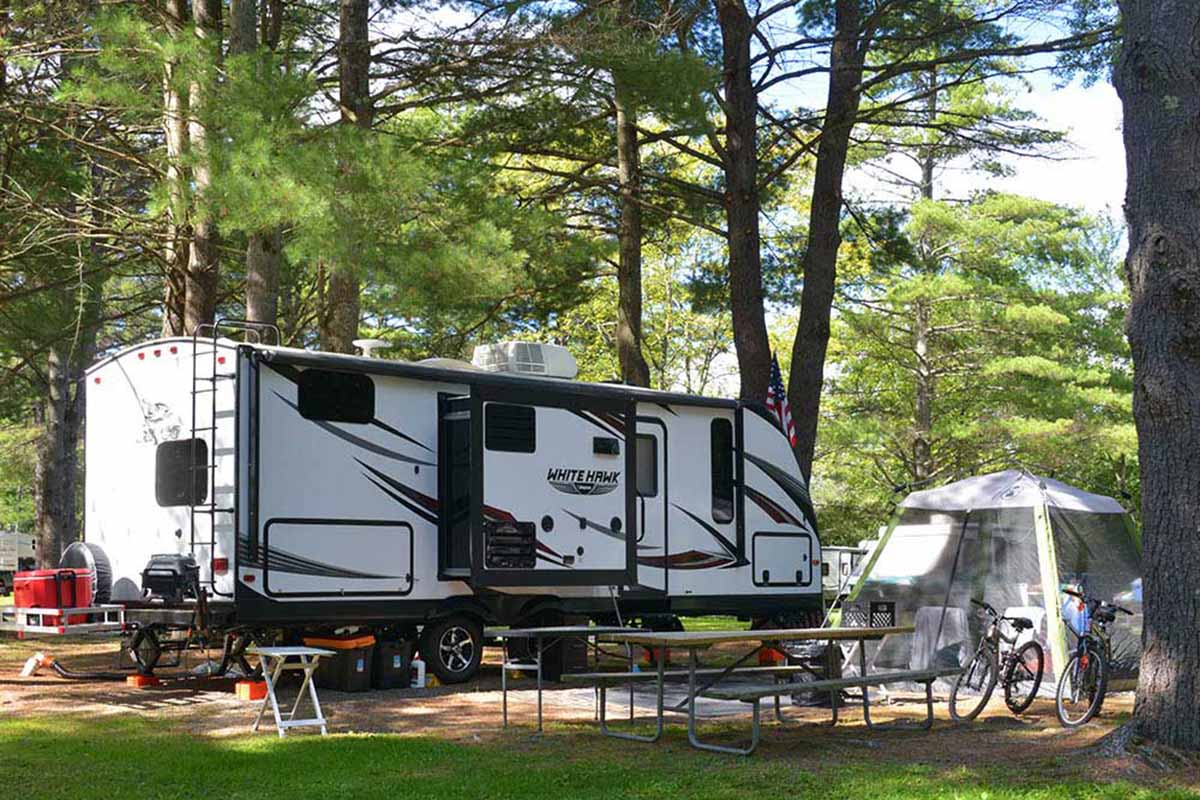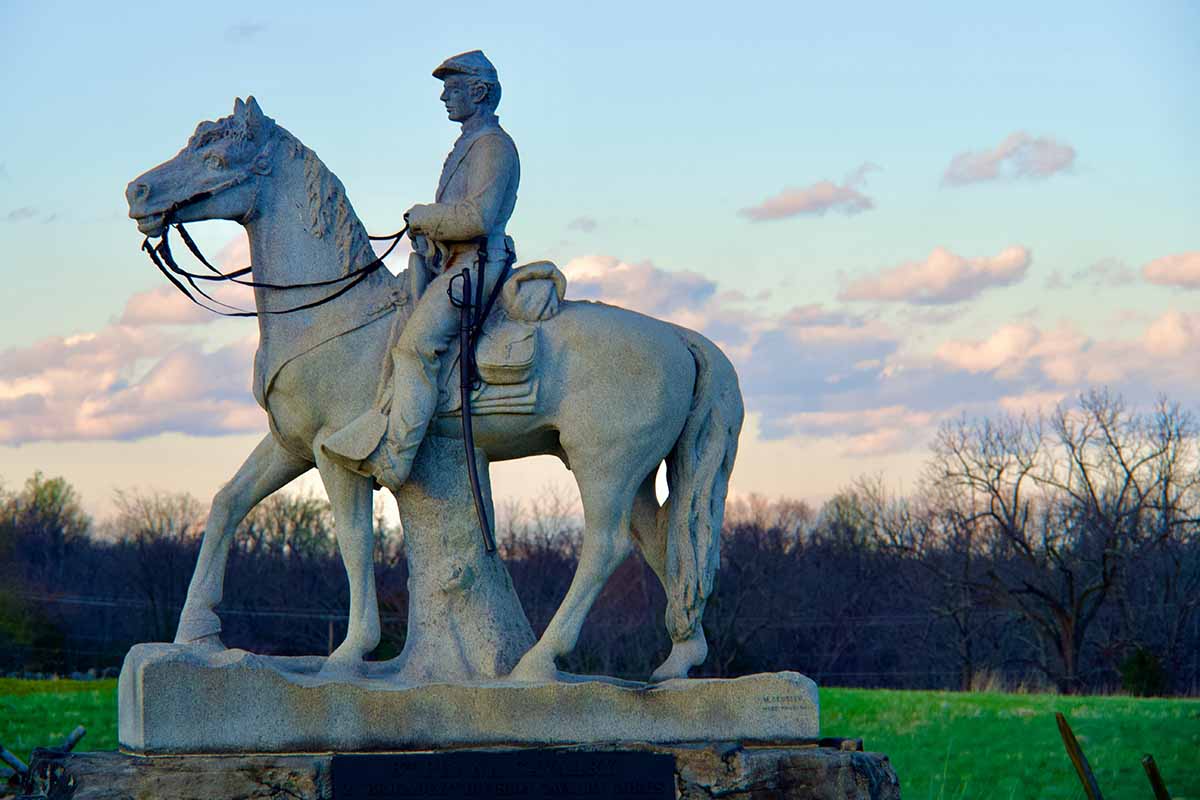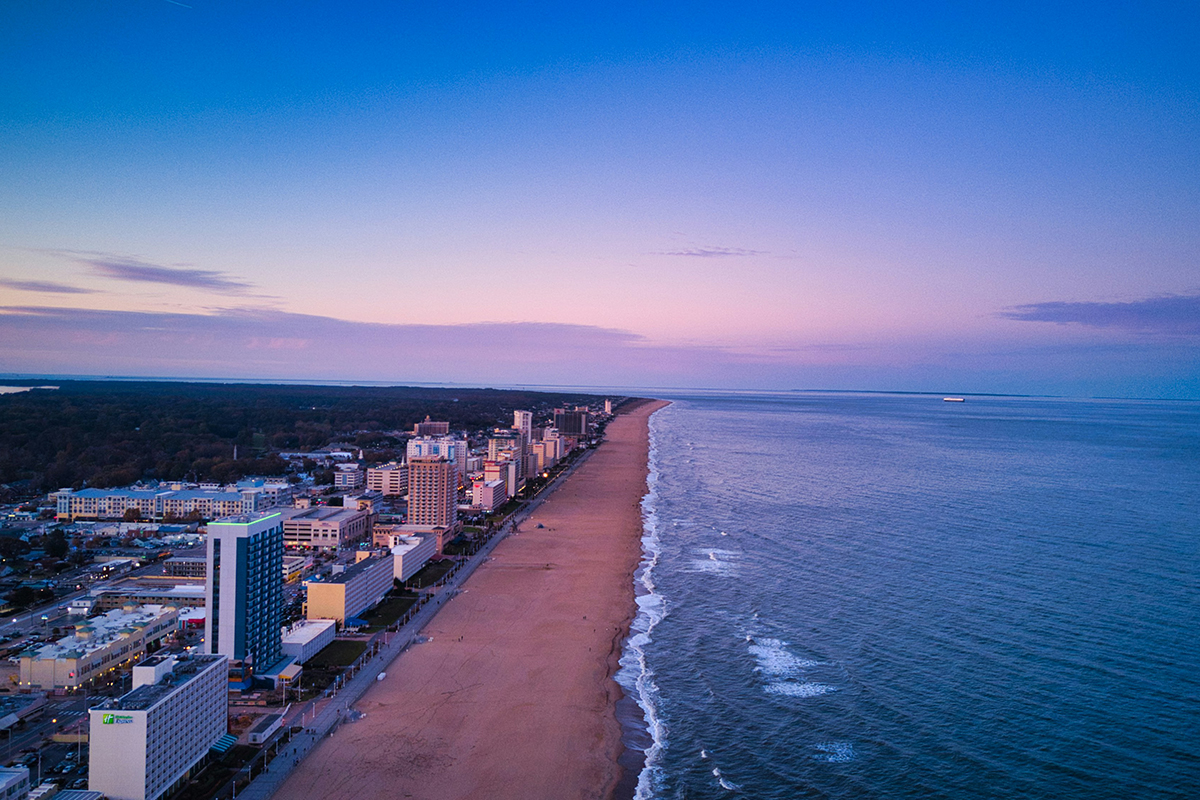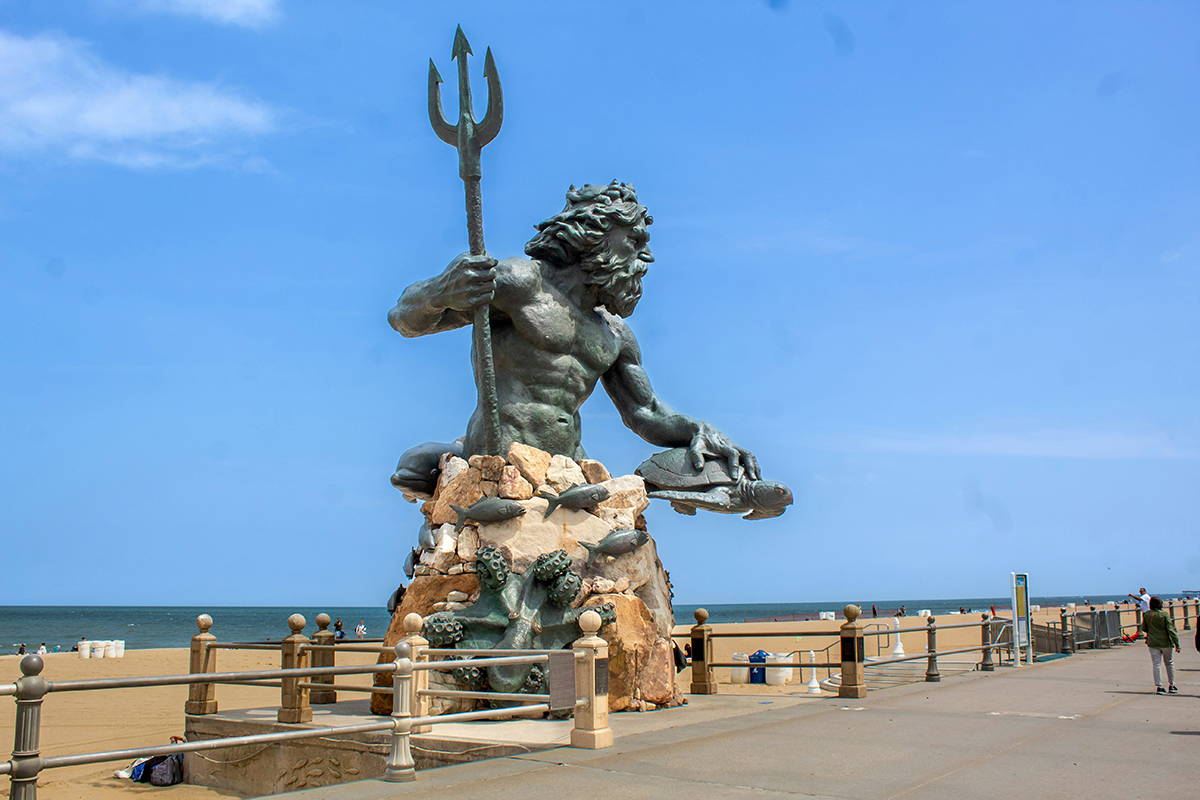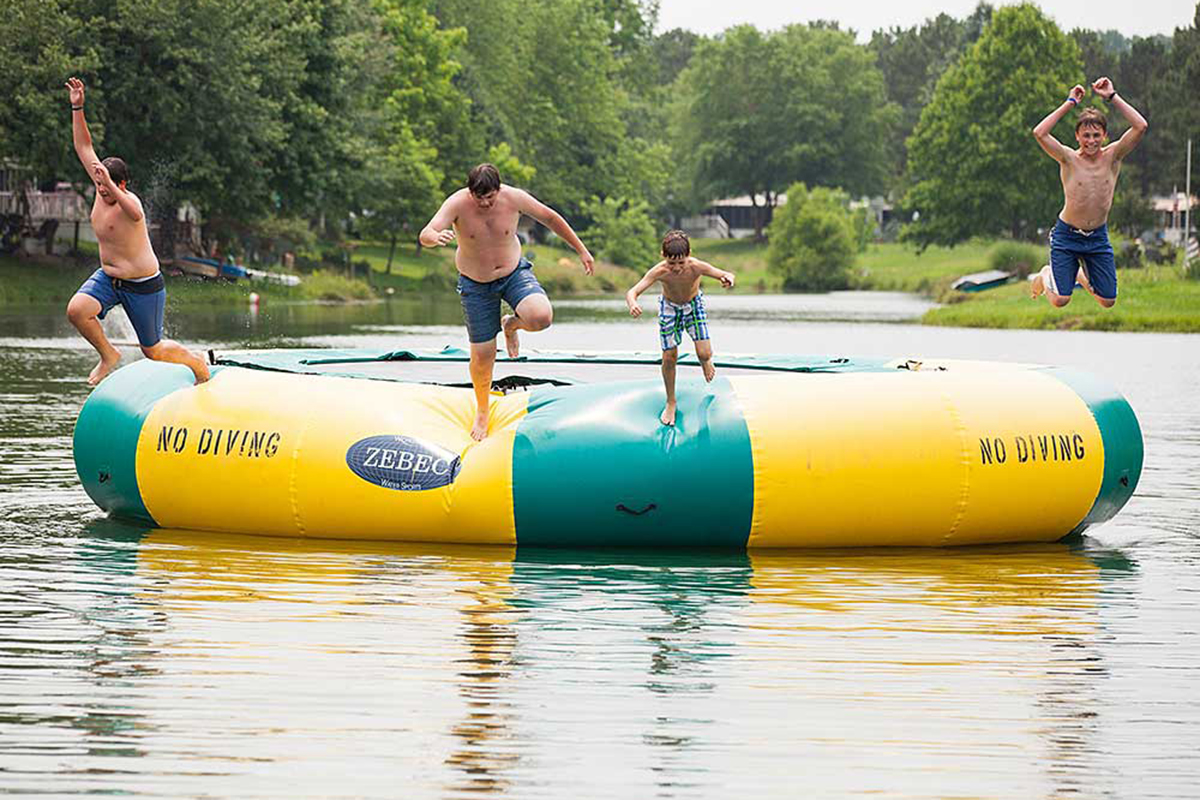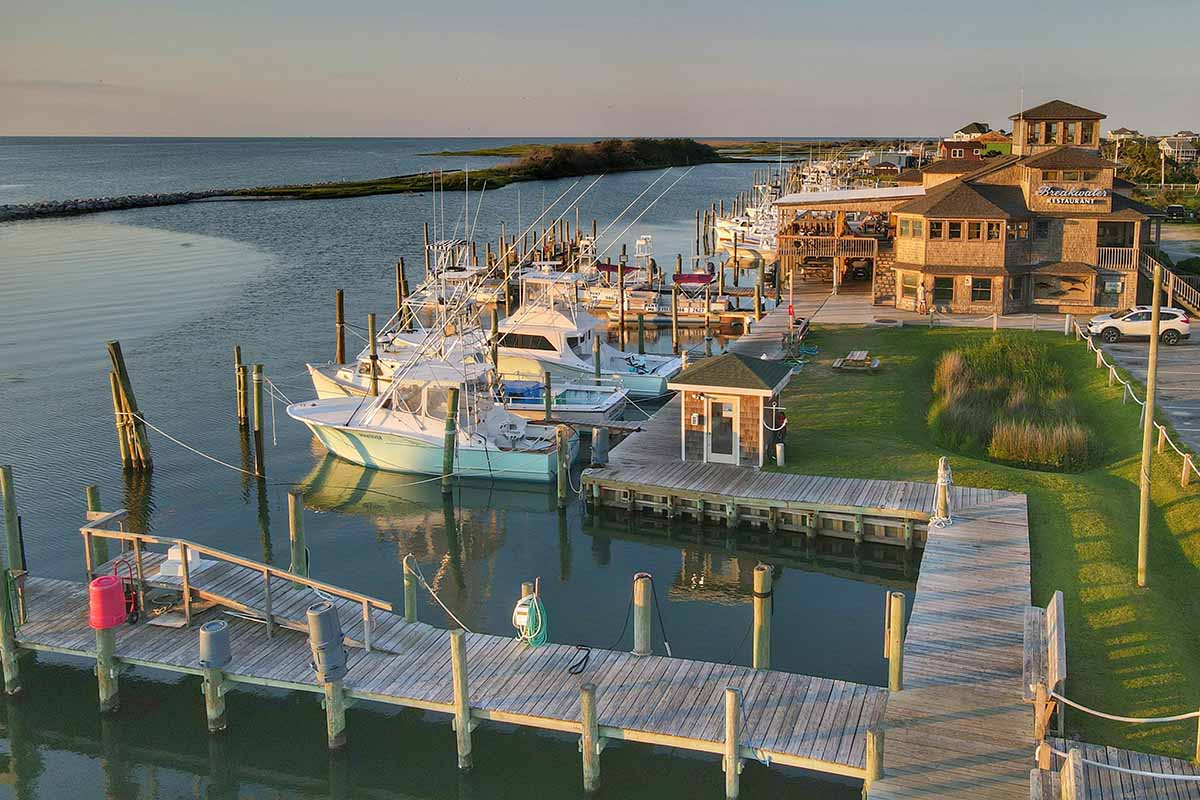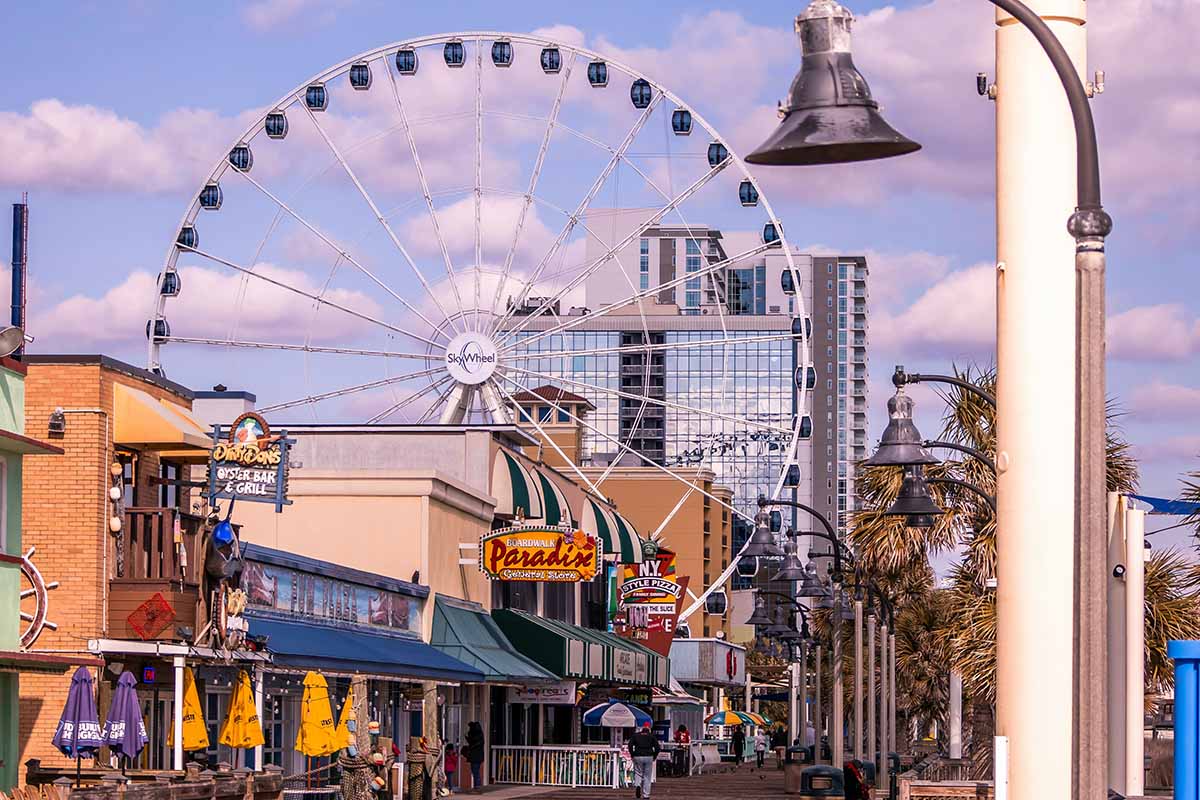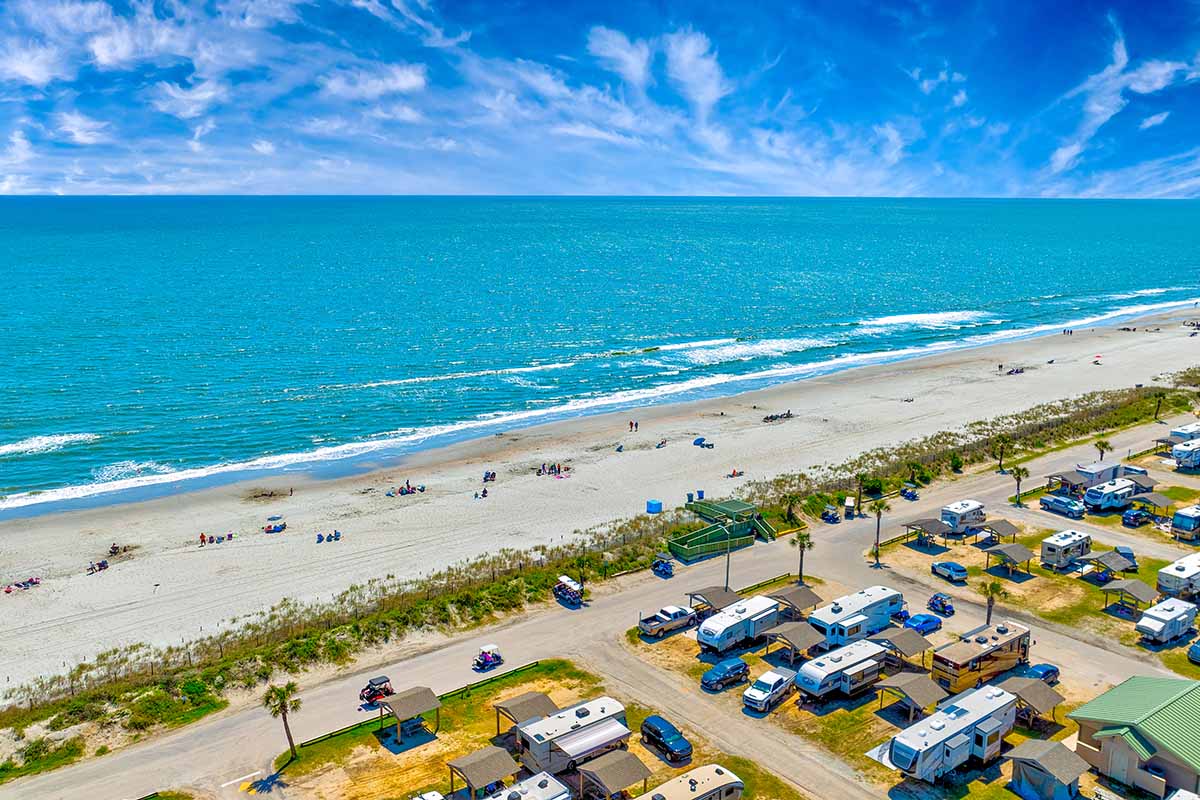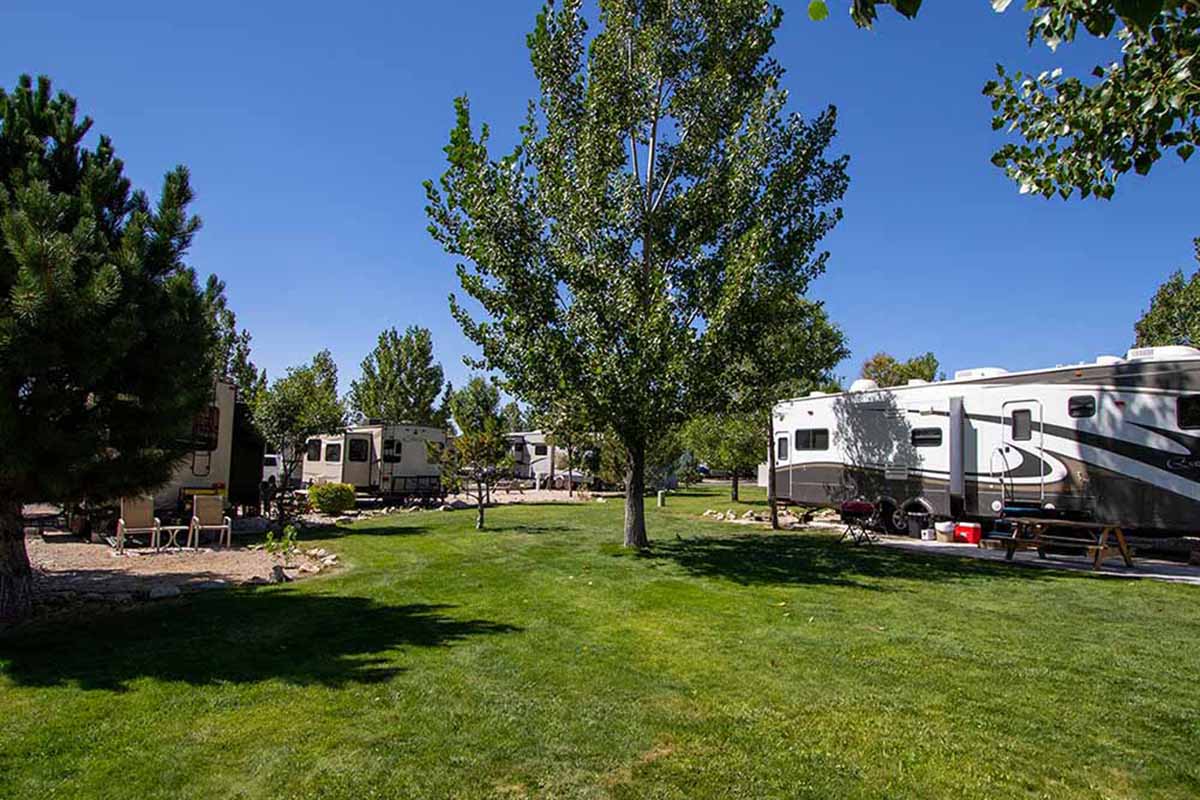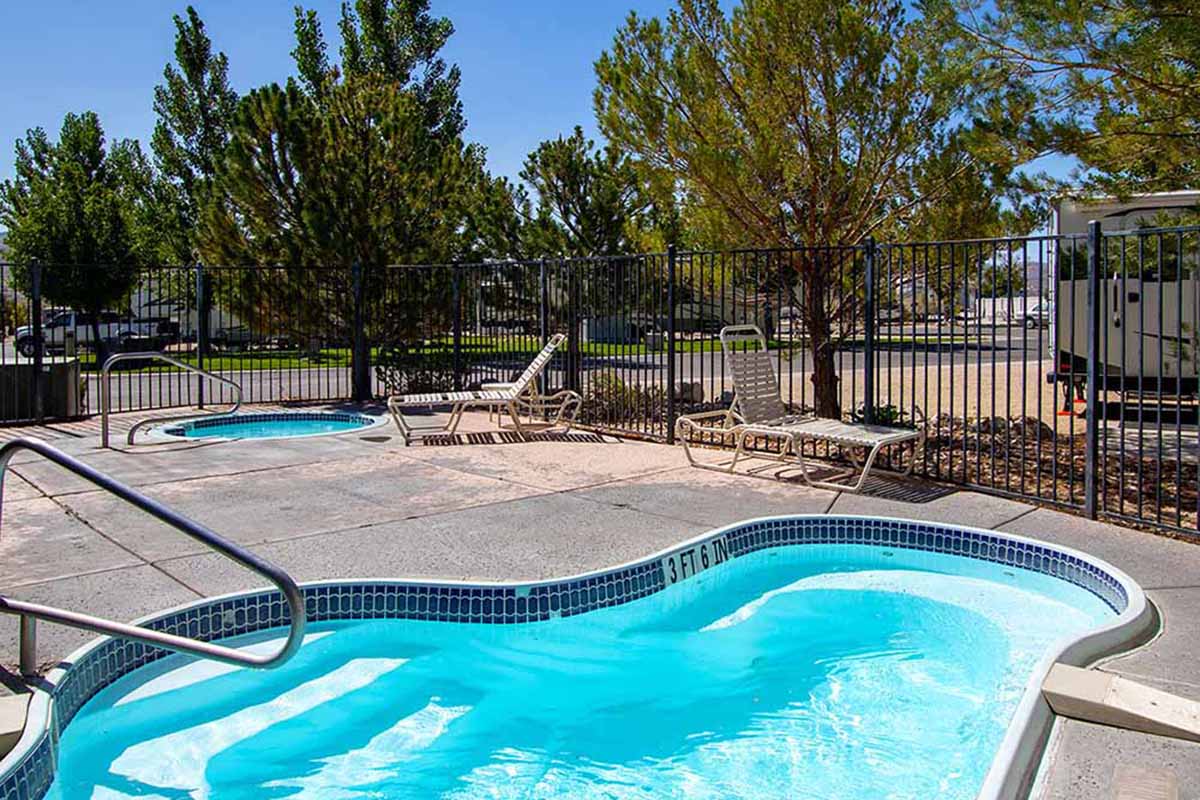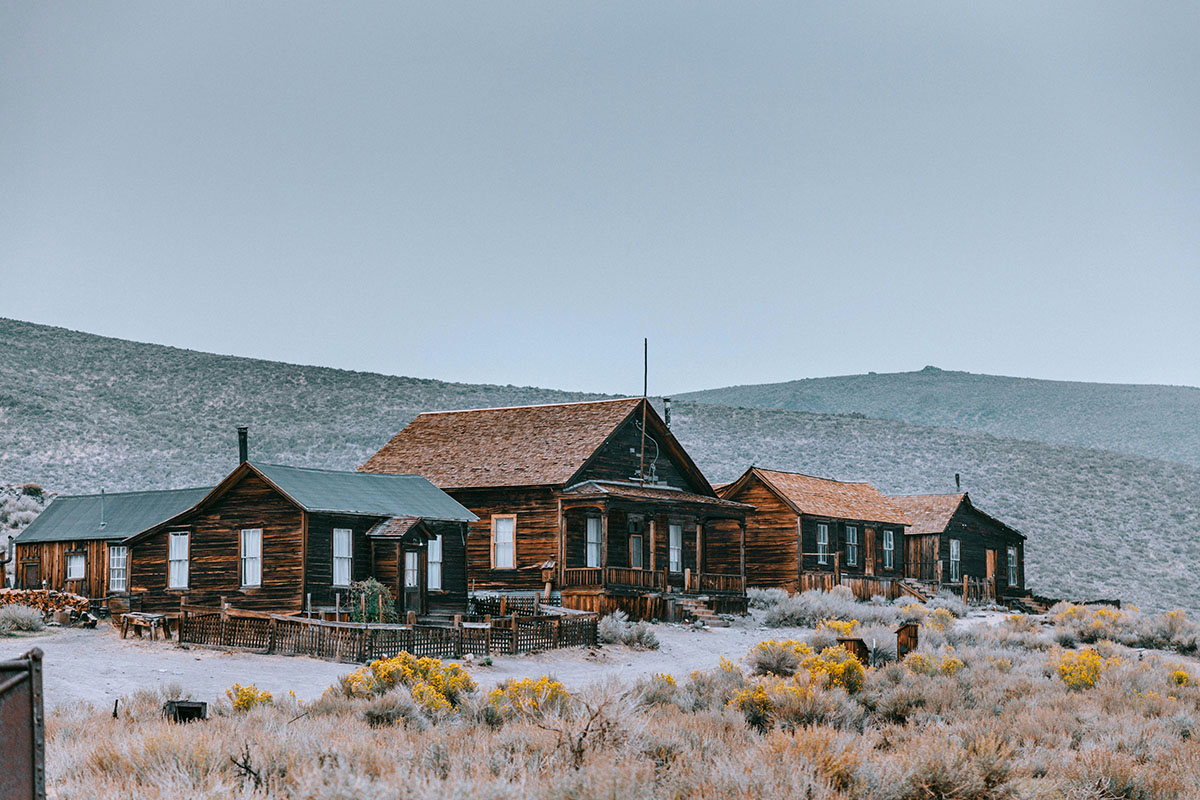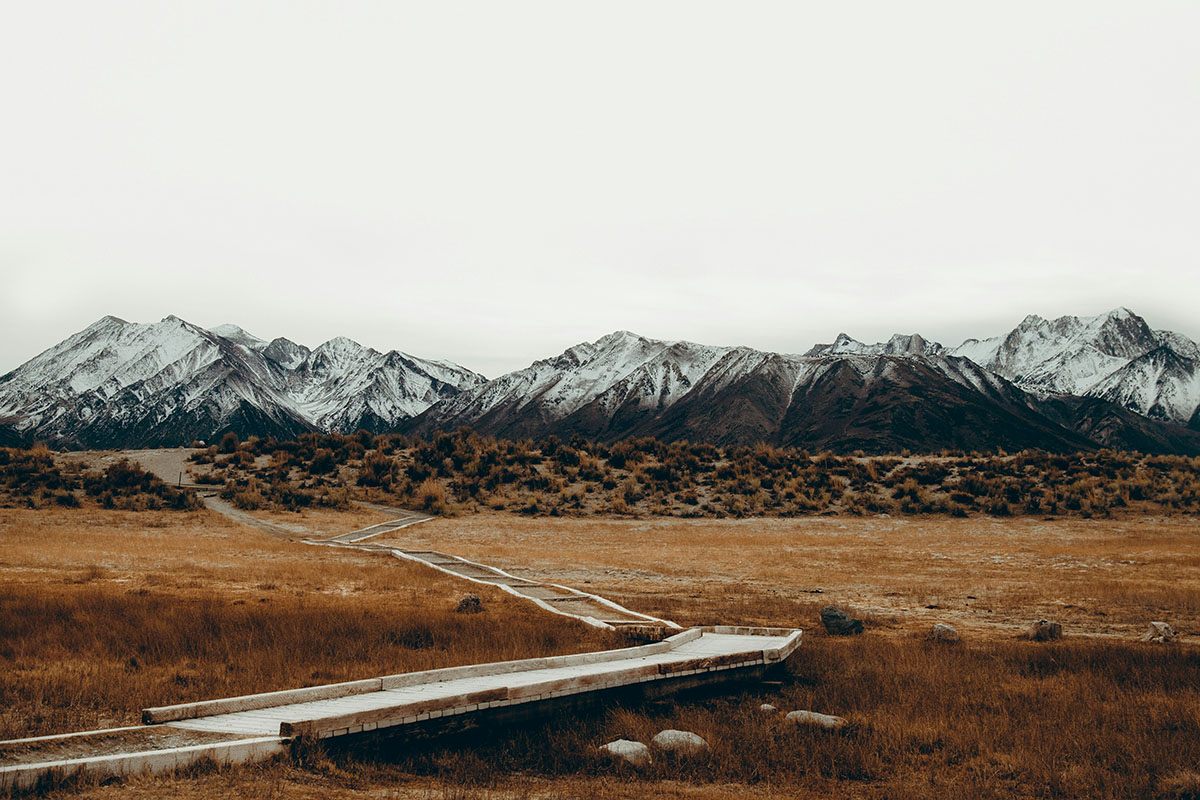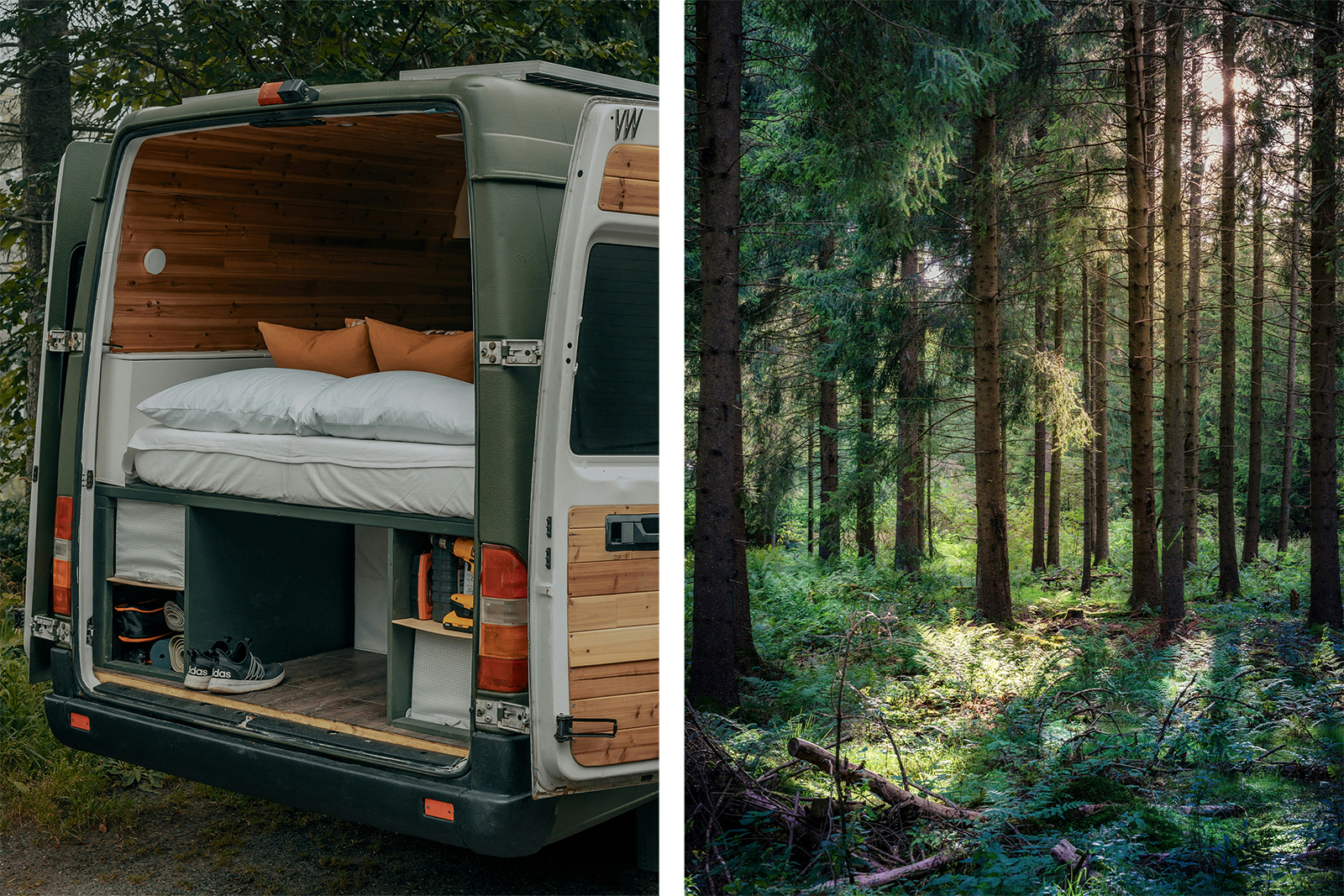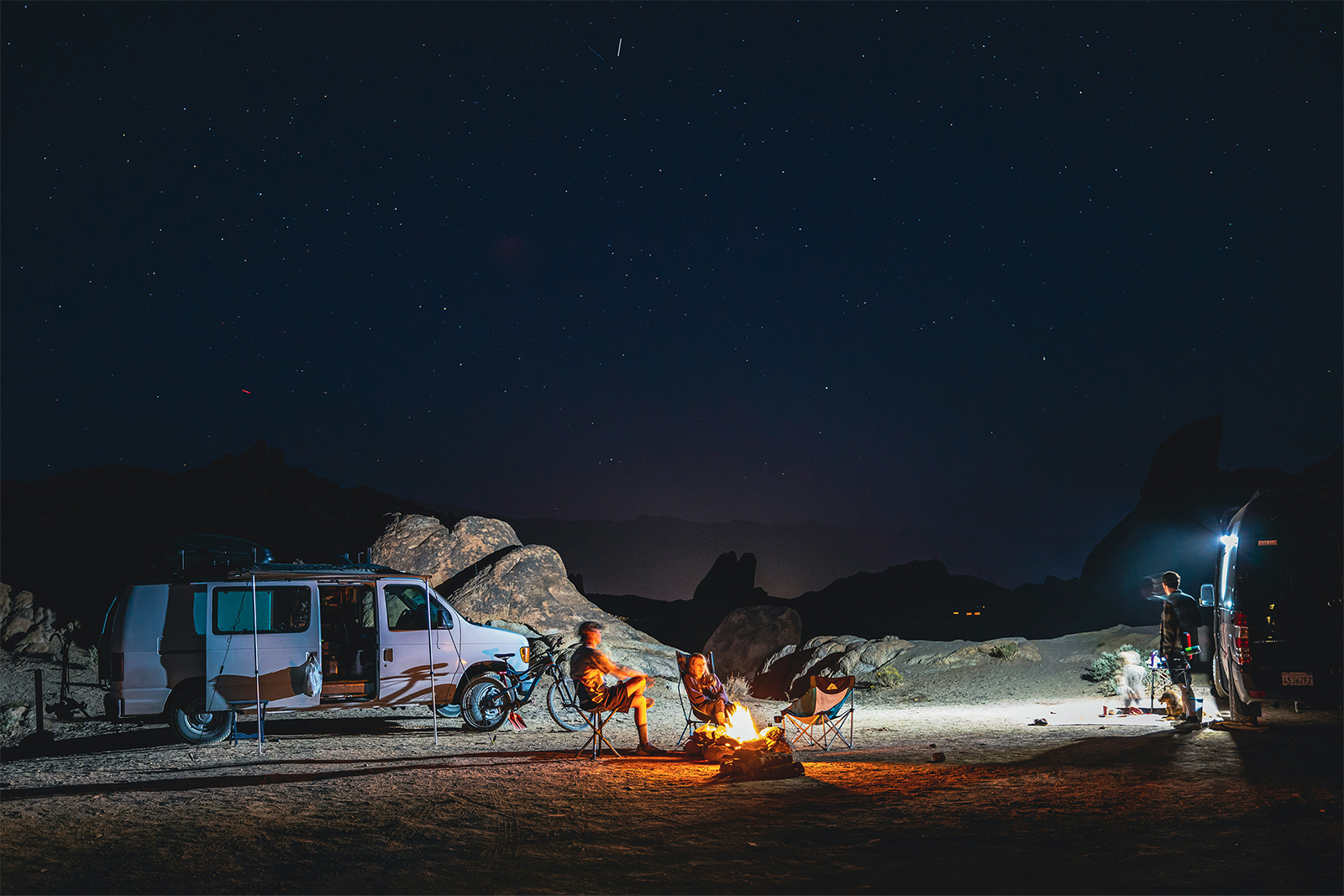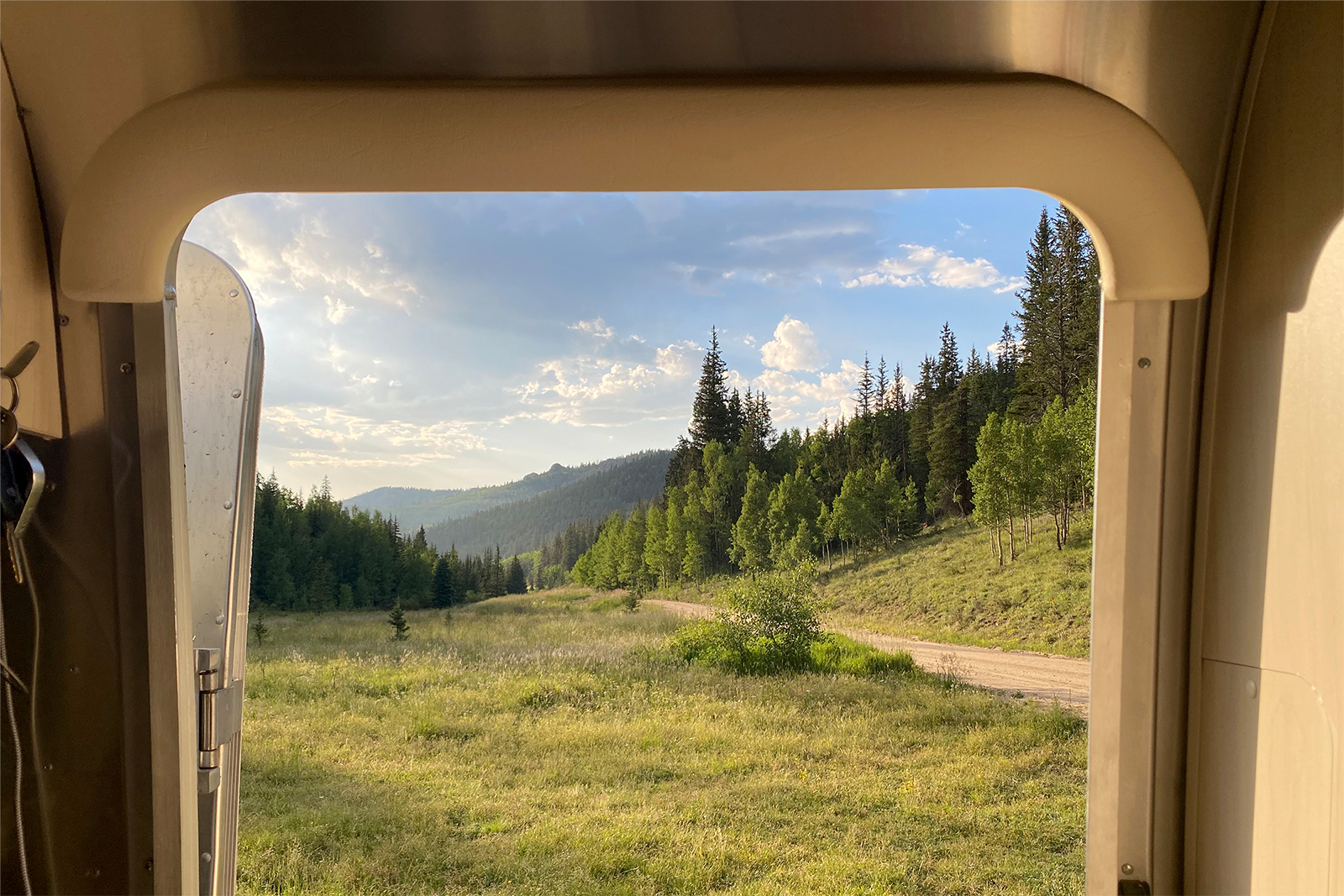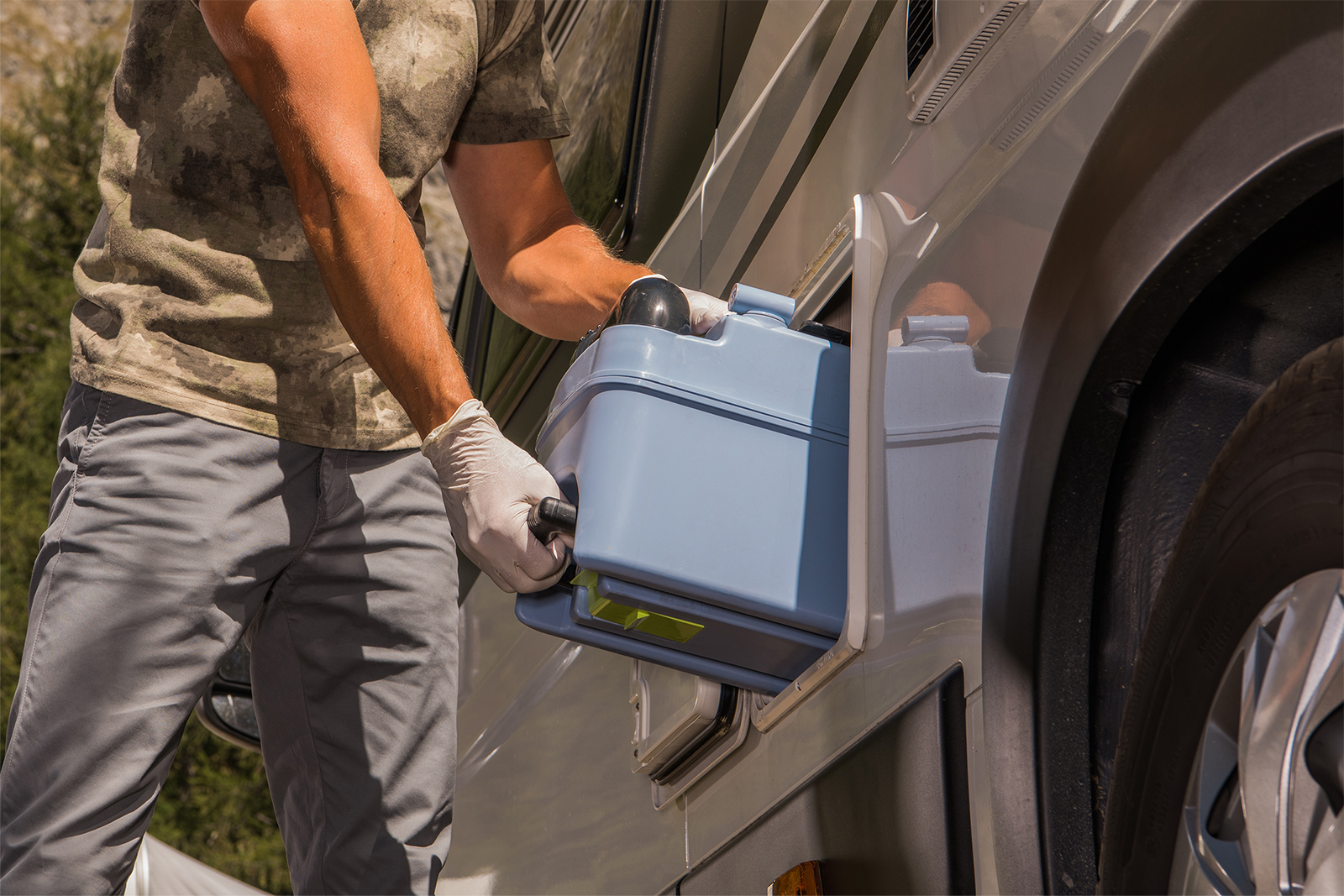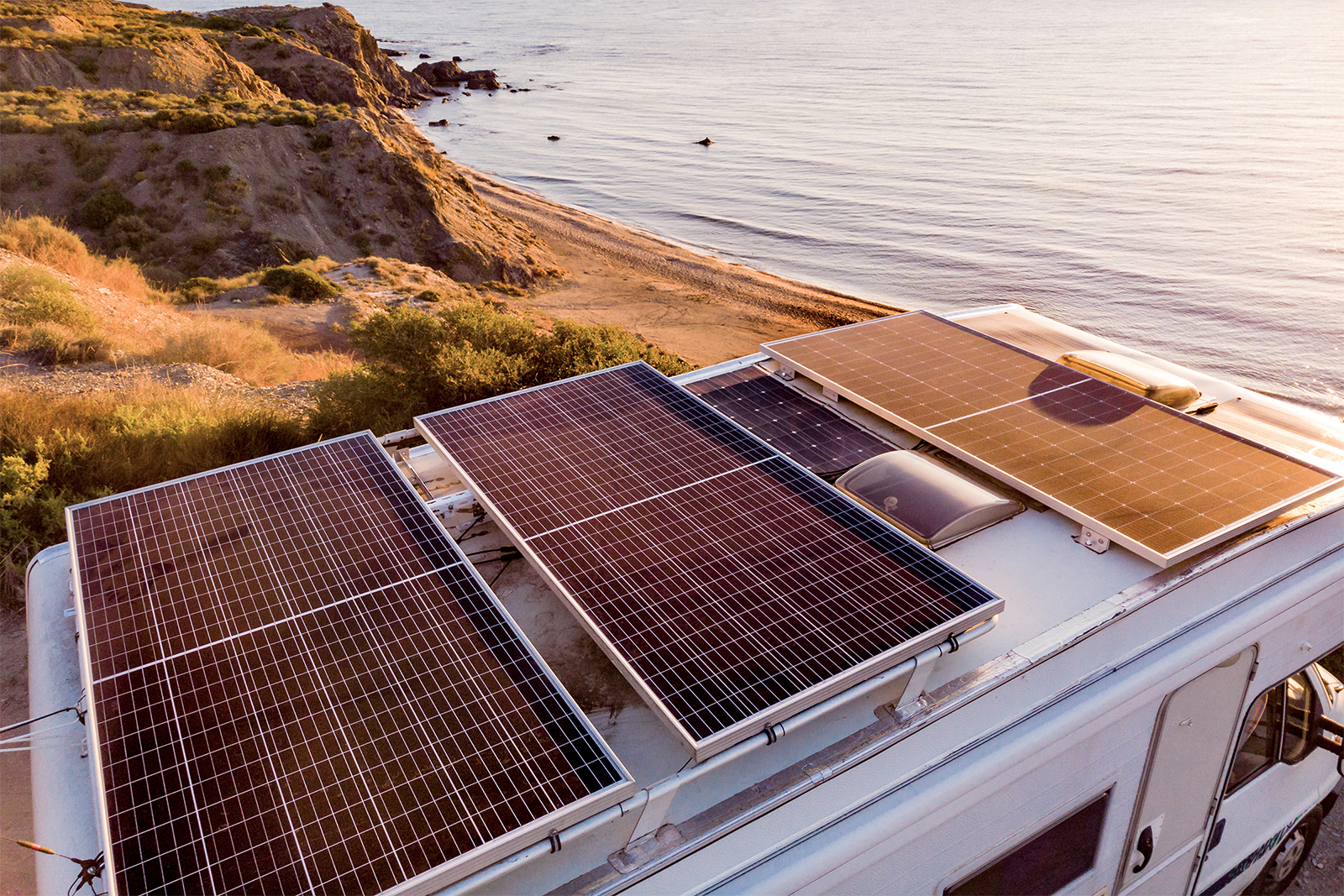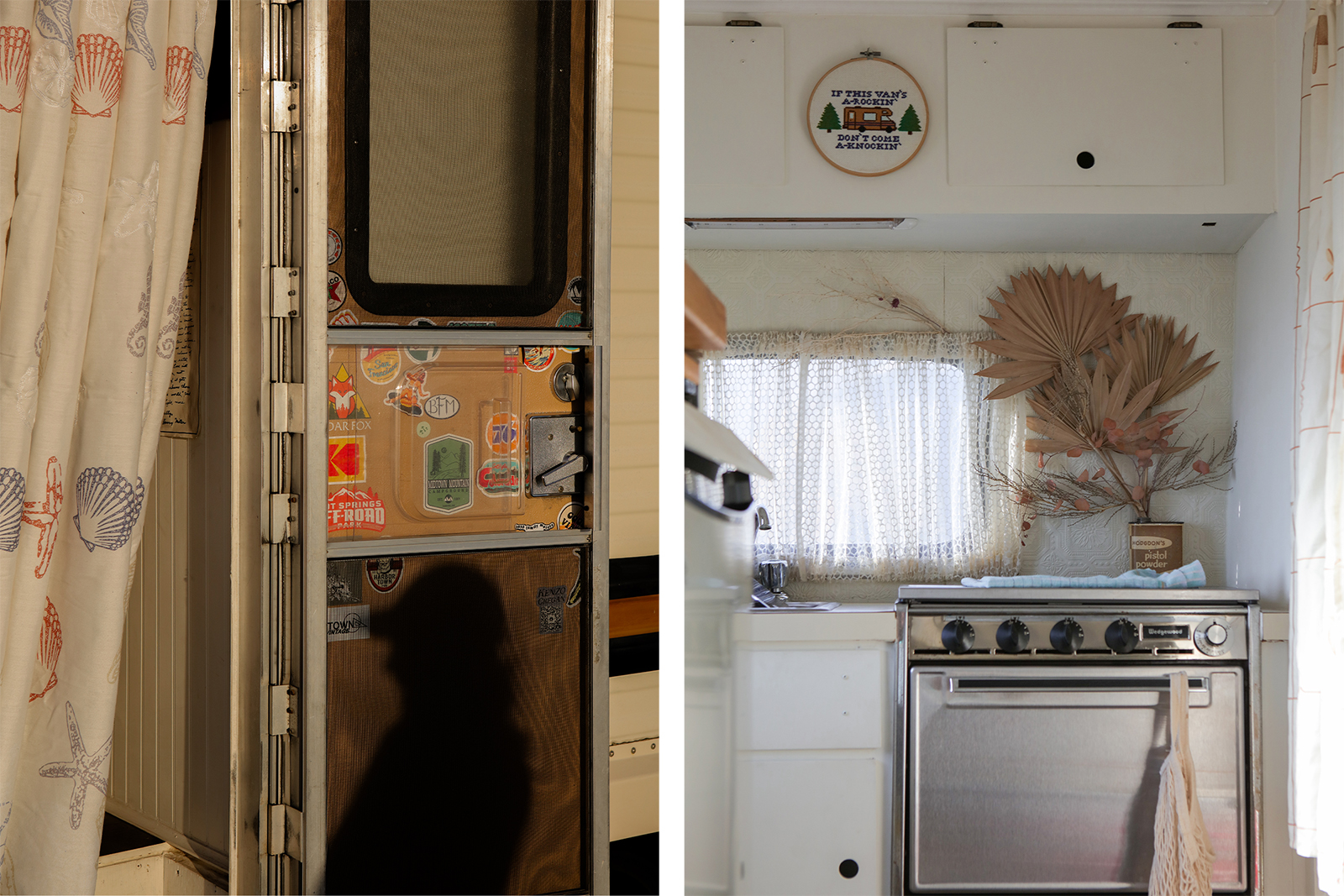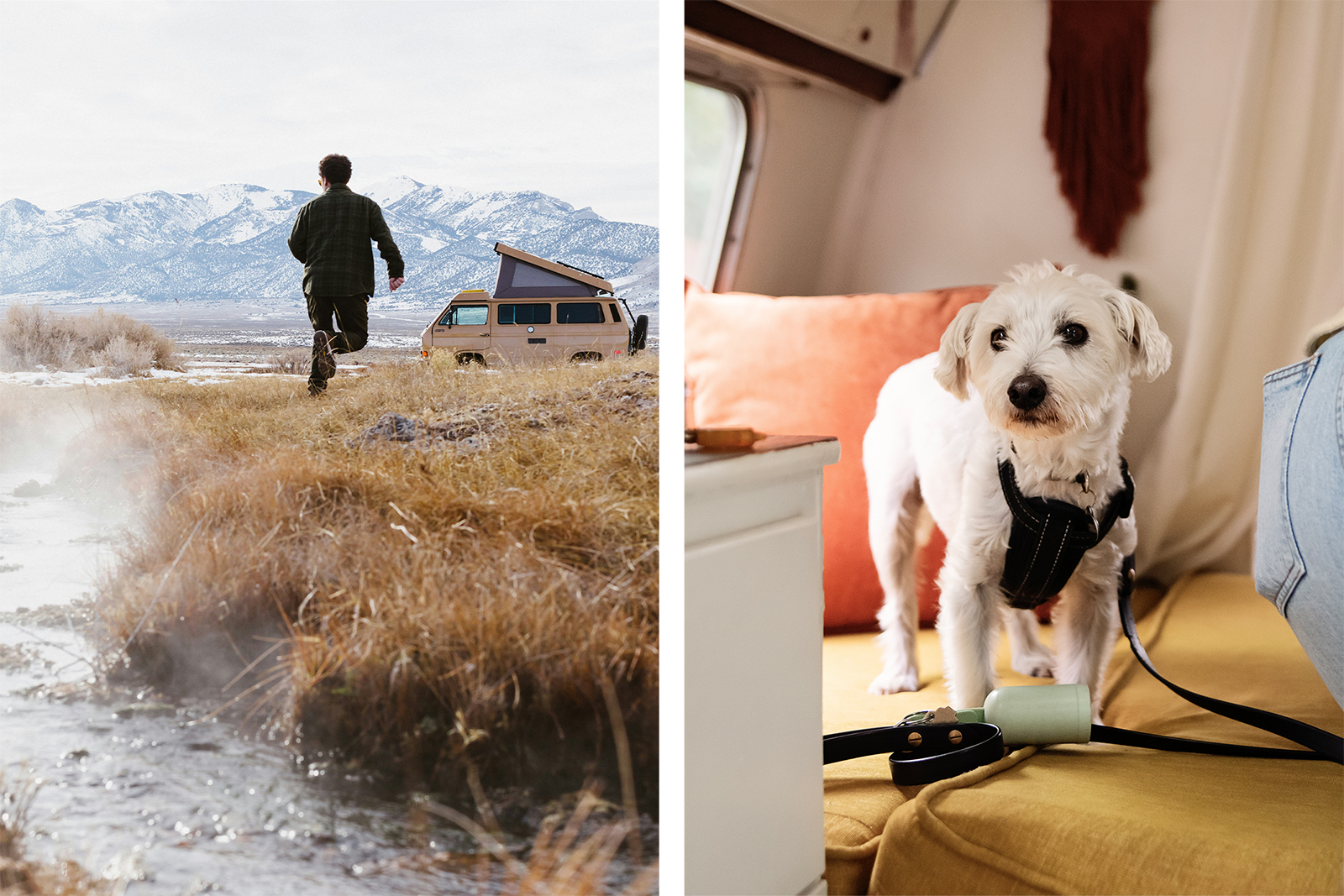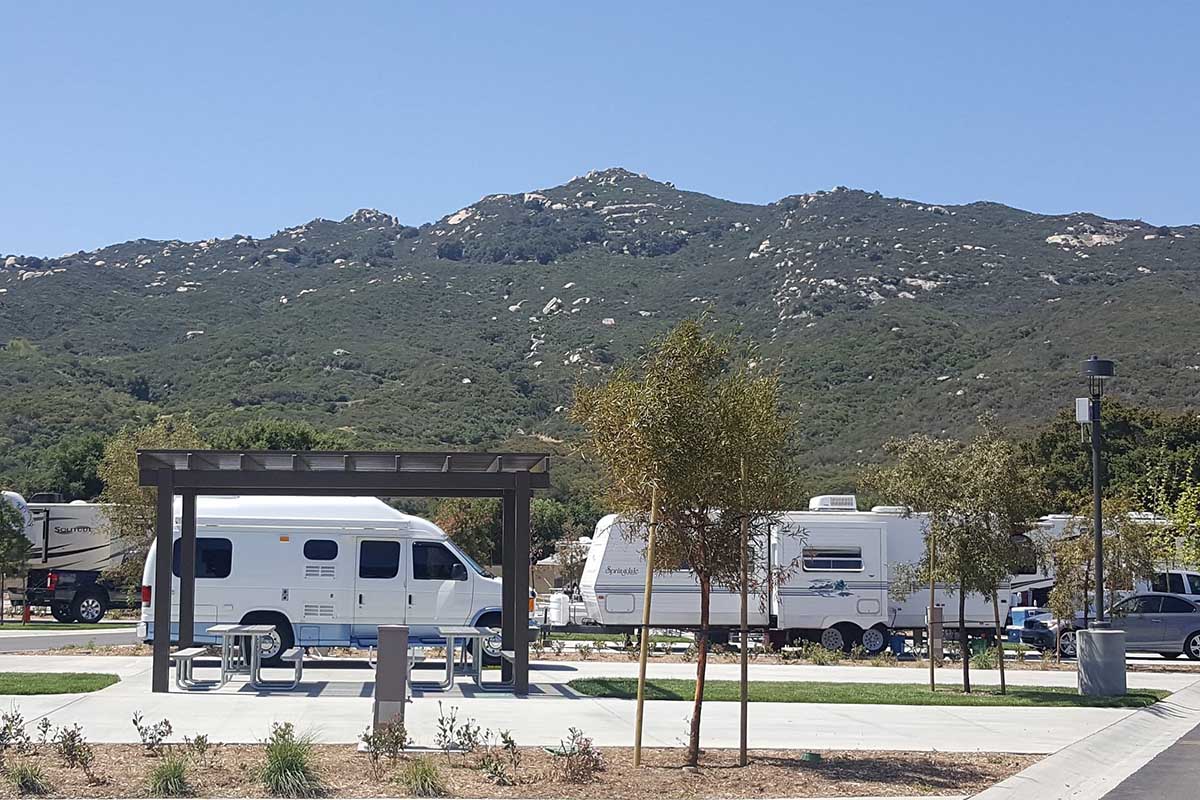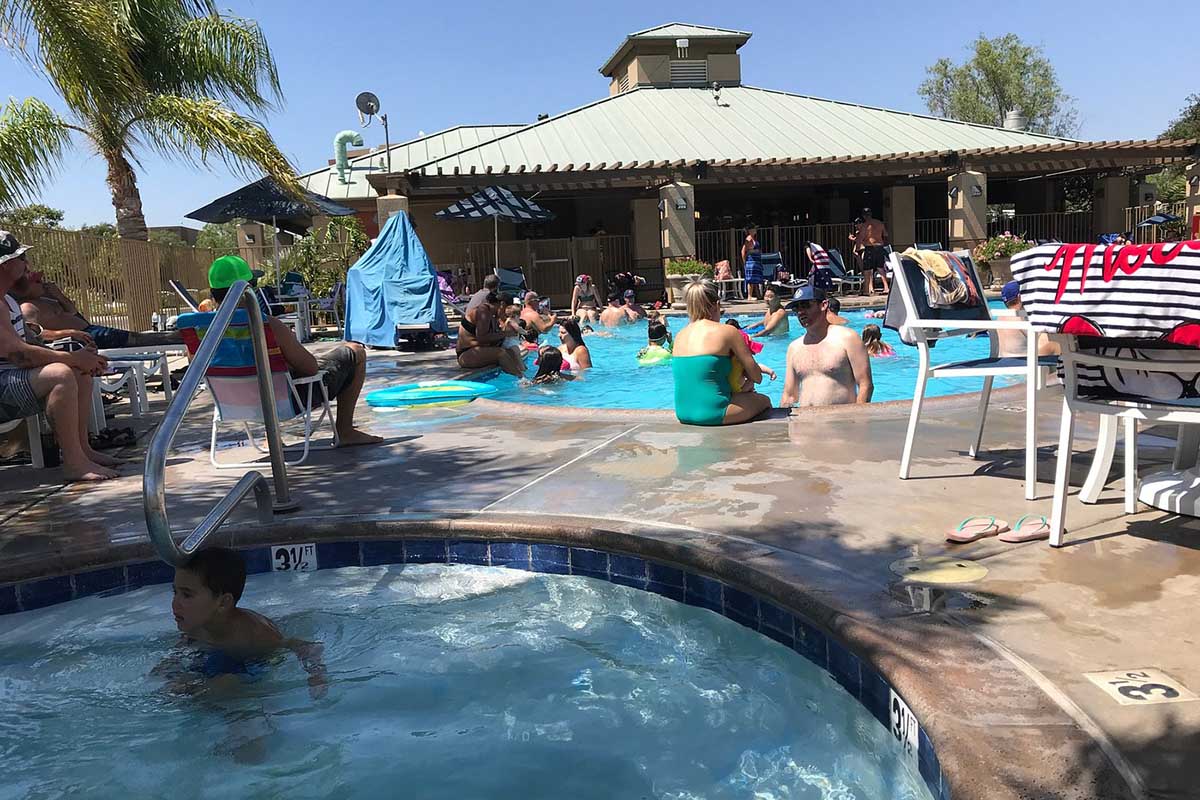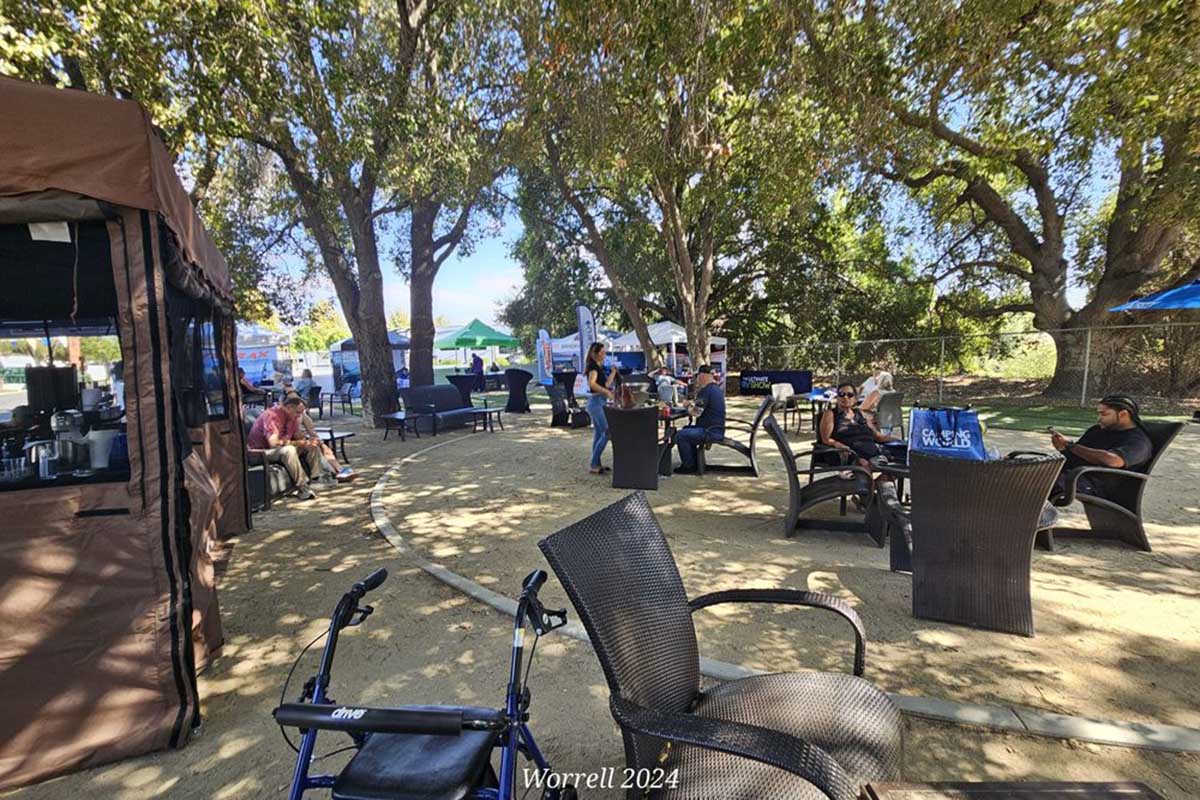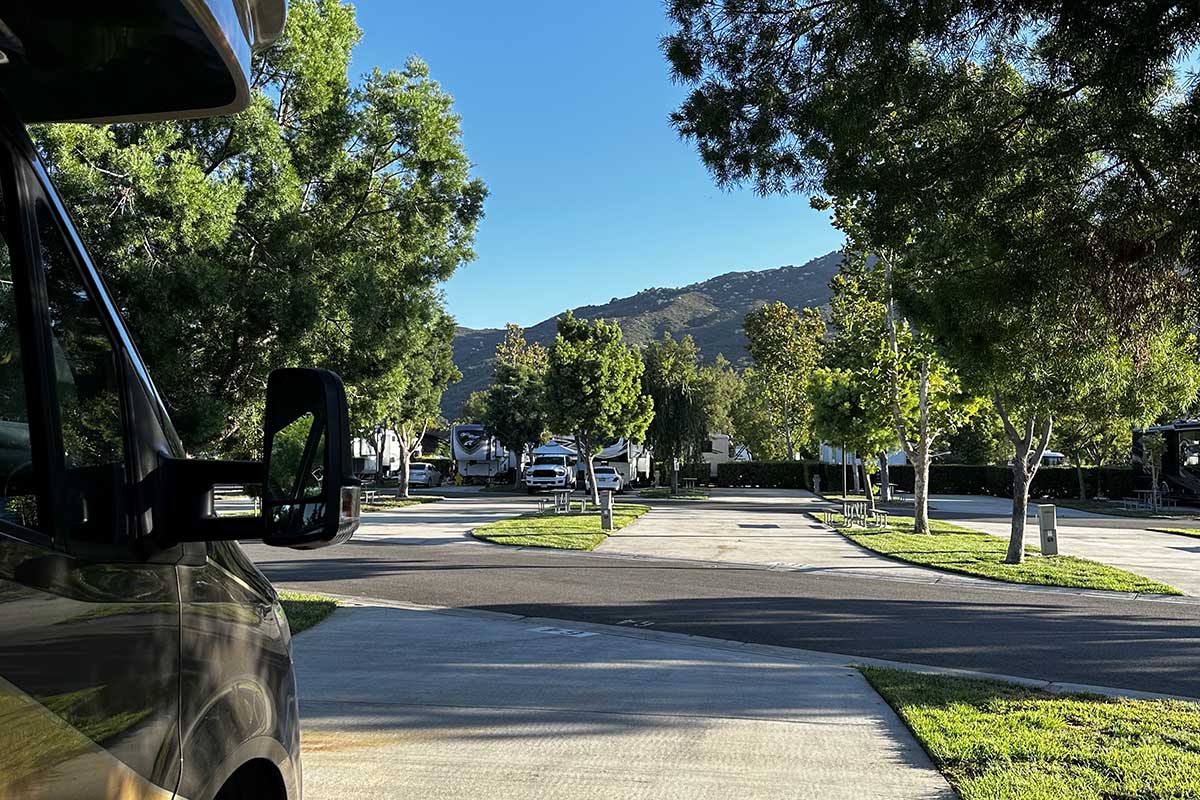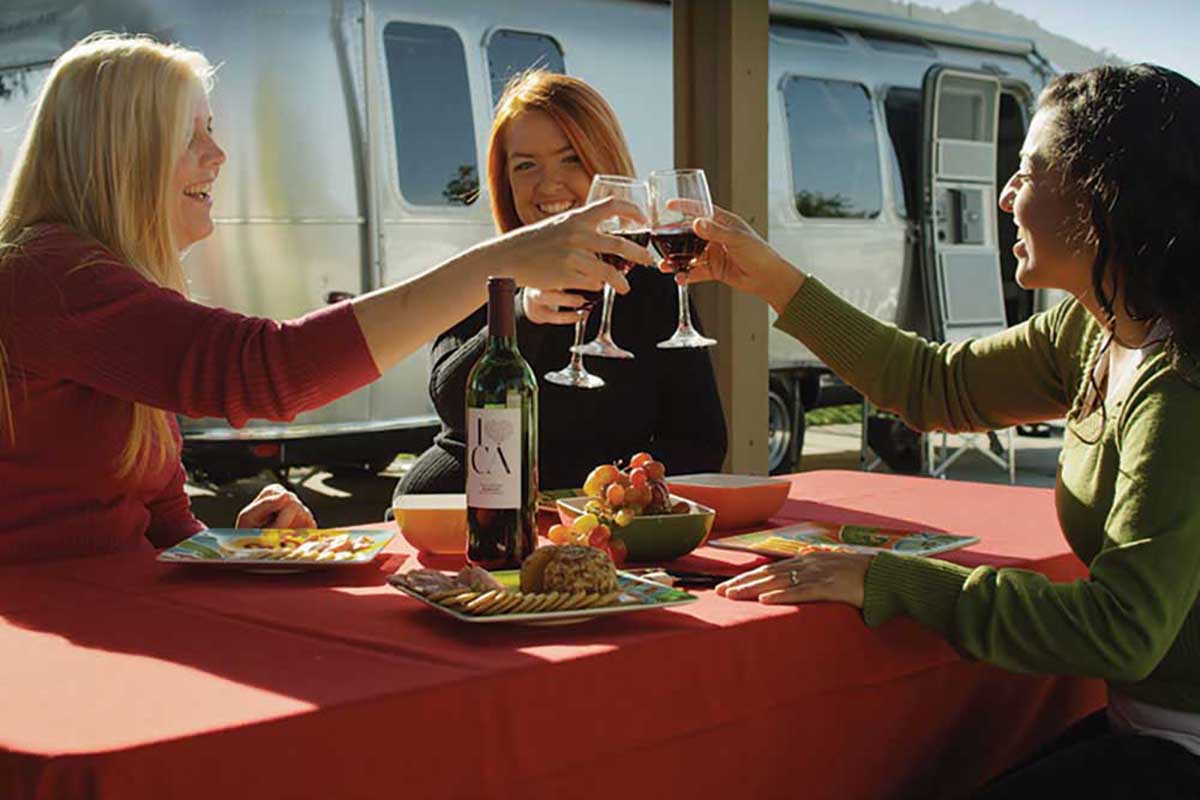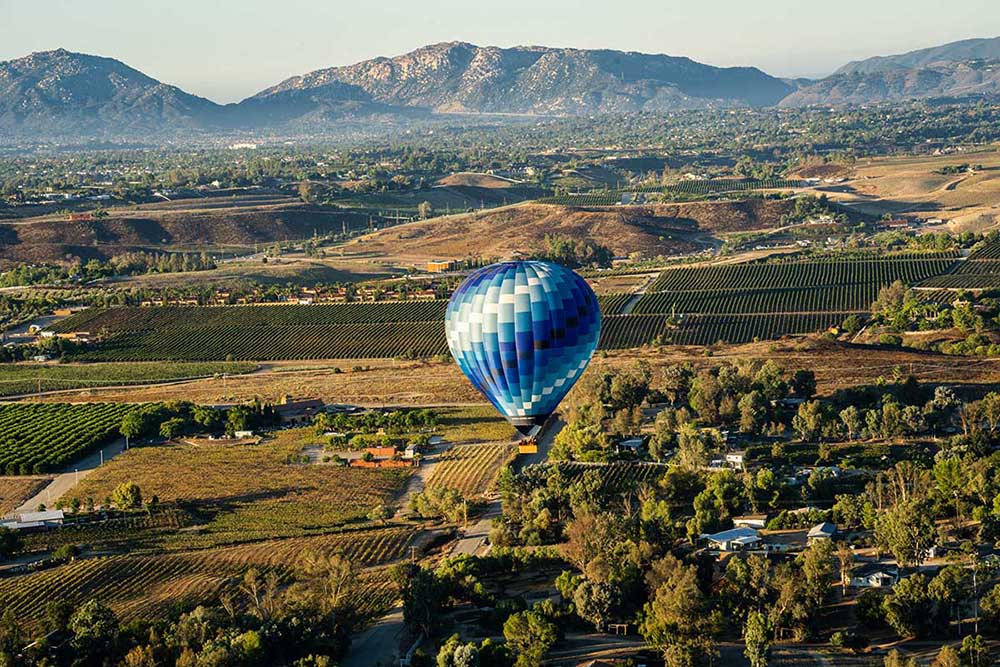RV Boondocking is big right now, and for good reason – it’s an excellent way to experience true freedom and immersion in nature.
Imagine parking your RV in the middle of a vast desert and watching a colorful sunset with mountains in the distance while surrounded by giant cacti. This is exactly what my family gets to do on a regular basis thanks to boondocking, and I’m here to help you experience it too.
In this guide to RV boondocking, I will cover everything you need to know so you can get started with confidence. 
What is RV Boondocking? (And Why It’s Taking Off)
First, let’s define boondocking. In short, boondocking is camping in the middle of nowhere (the “boonies”) without water or electric hookups. It’s also referred to as off-grid camping or dry camping.
Boondocking is different from camping in an RV park or campground because you usually don’t have amenities while boondocking. On top of that, boondocking sites are not assigned or even designated most of the time. Boondocking is usually free.
The option of free camping is appealing, which is a big part of why boondocking has taken off in recent years. The freedom and solitude offered by boondocking is also a big draw.

Clay Banks (L) and Daniel Sessler (R) via Unsplash
Types of RV Boondocking
As mentioned above, the term boondocking typically refers to dry camping in the middle of nowhere, or “the boonies.”
That said, some use the term more loosely. In these cases, they might be referring to a variety of different types of dry camping. These could include any of the following:
Dispersed Camping
This is the most common type of boondocking and what most people mean when they use the term. It involves camping in wilderness areas that are owned and maintained by the government. These lands include BLM lands, Forest Service lands, wildlife management areas, etc.
Roadside Overnighting
Some people refer to roadside overnighting as a type of boondocking. Another term you might hear thrown around is “wallydocking.” This involves parking in a parking lot and sleeping in your RV for a single night.
Some places that allow this include some Cracker Barrel locations, some Walmart stores and some rest stops. Just make sure you get permission before staying anywhere overnight.
Hosted Boondocking
There is also the option of hosted boondocking. Programs like Good Sam’s Overnight Stays connect campers with hosts who will allow the RVers to park on their land for a night or more. Usually this requires dry camping, and many consider it a type of boondocking.
Is Boondocking Legal?
Some people wonder if RV boondocking is legal. The answer? It totally is, but you have to make sure you’re doing it right.
Generally, you’ll find boondocking opportunities on BLM lands, US Forest Service lands, state trust lands and other government-owned wilderness areas. Some of these areas will require a permit, and in some cases, you’ll have to pay a small fee for the permit.
Additionally, almost all boondocking locations have a stay limit. This is usually 14 days.
Make sure you know the rules going in, follow fire safety rules and practice “leave no trace” principles to boondock without legal issues.

Leo Visions via Unsplash
How to Find the Best RV Boondocking Sites
Knowing where boondocking might be allowed is one thing, finding the right spots is another. Lucky for you, I know all the secrets for finding the best boondocking spots no matter where you roam.
Apps and Websites for Finding Spots
First, I highly recommend using the following apps and websites to search for boondocking spots that campers before you have found:
Word of Mouth
We’ve also found some pretty great spots through word of mouth. When you’re at campfires with fellow RVers, ask about their favorite boondocking sites and take notes. It can also be helpful to stop in at local ranger stations to ask the rangers for suggestions.

TwilightProductions via Getty Images
Choosing the Best Spots
When deciding if a campsite will work for you, be sure to consider whether your rig will be able to access the site. You’ll also want to consider how safe the spot is and if you’ll have a cell signal or a clear view of the sky for satellite internet. Of course, scenery should also be taken into consideration, as many boondocking spots offer amazing views.
Usually, you can find a lot of this information by reading reviews online. That said, if you feel unsure, you may be able to use satellite view on Google Maps to determine whether a site will work for you.
How to Prepare Your RV for Off-Grid Living
Finding the best RV boondocking sites is just the first step when it comes to preparing for an off-grid adventure. The next step? Prepping your rig.
Water System
First, you will need to consider how you want to handle your water usage. Filling your fresh tank before you head out is a must. Rationing water by taking navy showers, showering at a nearby gym and using paper plates to reduce dishwashing also helps.
Lastly, ensure you have a means to carry wastewater in case you need to dump the tanks before moving the entire rig. A “blue boy” (portable waste tank) will help with this as long a dump station is nearby.

Welcomia via Getty Images
Power System
You’ll also need to think about how to power your rig while dry camping. Charging your house battery is an obvious first step, but investing in a solar setup and/or inverter generator is necessary for recharging the battery once it gets low.
You can also conserve battery power by using LED light bulbs. To run your A/C, invest in a generator or battery bank and an inverter capable of handling the task.

Voyagerix via Getty Images
Packing Up
Make sure you have everything you need for a comfortable stay. Many boondocking spots are far off the beaten path, meaning you’ll want to have plenty of food and water, plus a way to filter water, in case of an emergency. Extra blankets and towels, a full propane tank, a first aid kit, a satellite phone, a solid tool kit and good RV roadside assistance are also must-haves.

RV Boondocking: What to Expect
In my opinion, boondocking is a lot of fun. That said, there are definitely some downsides as well. Here are some of the things you’ll want to expect going in.
Natural Annoyances
You’ll be parked in the middle of the wilderness. Obviously, this comes with some annoyances. Expect bugs, dust, dirt and uncomfortable temperatures while boondocking. Come prepared to combat these things.
No Hookups
It’s a good idea to consider this fact carefully and go in prepared to ration water and power to make them both last as long as possible. Consider how you can conserve these resources and bring the necessary tools along. You’ll also want to plan your routes accordingly, using apps like Campendium to find potable water sources and dump stations along the way.
Special Safety Steps
Lastly, you will want to take special steps to stay safe while boondocking. Trust your gut and never stay anywhere that makes you feel uncomfortable. Carry bear spray and keep it by your bed each night. Replace your door lock with something more robust. Lock your doors and windows at night and during the day if you’re away. Keep a “go bag” and pay attention to the weather in case you need to flee a storm. Always have RV roadside assistance so you have someone to call in case of emergency.

Dominique van Olm
Boondocking Etiquette: Being a Good Neighbor in the Wild
Many times, we have gotten lucky enough to have a huge swath of land to ourselves while boondocking. That said, we have also had neighbors in more popular boondocking areas. If this is the case for you, make sure you practice good boondocking etiquette.
This involves…
- Using your generator sparingly and observing quiet hours from 10pm–7am (or whatever might be posted).
- Dispose of all waste properly. Never dump tanks on the ground.
- Give everyone their space. Avoid parking near other campers and keep your pets leashed and on your own site.

Paje Victoria (L) via Unplash and Martine Doucet (R) via Getty Images
How to Stay Connected While Boondocking
If you work while traveling, staying connected to the internet while RV boondocking might be key. Fortunately, there are plenty of ways to do that these days.
For many years, we used a hotspot and a cell booster to stay connected as we roamed. We would read reviews before choosing a campsite to ensure we would have an internet connection. This worked well for us for years, and though it is a bit limiting, it’s a great option for those who camp occasionally and those needing a budget-friendly option.
These days, we use Starlink to stay connected while camping off-grid. This allows us to go more places, as it does not require a cell signal—only a clear view of the sky. The biggest downfall of this option is that it is pretty expensive.
Another problem with using Starlink while boondocking? While the hotspot can be charged up in advance, we had to find a way to power the Starlink dish and router while in use while boondocking.
The best option we found was to use a solar panel that charges a lithium battery which is connected to a pure sine wave inverter (not modified sine wave). We plug the Starlink into the inverter and we’re good to go. Just make sure you turn the unit off when not in use so you don’t waste battery power!

Common RV Boondocking Mistakes to Avoid
Every boondocker makes a mistake at one point or another, and most of us end up making a whole series of mistakes as we learn the ropes. That said, knowing the most common mistakes will help you avoid them.
These include:
- Ignoring your RV’s limits (battery, tank capacity, clearance)
- Not arriving early to scout and settle in
- Overlooking weather and terrain
- Leaving a trace or bothering nearby campers
RV Boondocking Resources and Communities
Feeling nervous about giving RV boondocking a try? Connecting with fellow RVers to ask questions and learn about the aspects that seem most nerve-wracking can help. Online communities such as Good Sam Community can help with that.
I also recommend finding YouTube channels about boondocking to see the process and get a feel for how you will make it work for you. Gone With the Wynns and RV With Tito have some fantastic videos (and blog posts) on the subject. They really helped me as we were diving in.
FAQ: RV Boondocking Basics, Solved
How long can you boondock in an RV?
Most RVs can dry camp 3–7 days. The exact length of time depends on the size of the water tanks, the power setup, the number of people staying in the RV, and how good the occupants are at conserving resources. In our motorhome a couple of years ago, we had a big solar setup and carried extra water and external waste tanks, and could go for a couple of weeks if we were careful.
Is RV boondocking free?
Boondocking is often free if you’re camping on public lands or allowed lots. That said, this isn’t always the case, so it’s important to do your research and be mindful of local rules and limits.
Can you boondock in a Class A or big rig?
You can boondock in any size RV you like. That said, bigger rigs will have a harder time finding spots they can safely access and fit into. Scout carefully and you should be able to find some great places to stay in your big rig.
How do you shower while boondocking?
You can shower in your RV while boondocking. If you want to save gray tank space, simply use the outdoor shower and conserve fresh water by taking navy showers. If you really want to make your water last, head to a local gym or pool to shower. Some gyms offer nationwide memberships that can be helpful if you’re an avid boondocker. If you find yourself going days between showers in order to stretch resources, use wipes and dry shampoo to clean up.
Can I use Starlink while boondocking?
Yes, as we mentioned above, Starlink Roam works great off-grid. Just make sure you’ve got a solar/inverter setup that can handle the power draw.
What’s the difference between boondocking and dry camping?
These terms are often used interchangeably. Boondocking usually refers to free, remote, off-grid camping. Meanwhile, dry camping can also mean staying off-grid in a paid campground (no hookups) or camping in a parking lot or driveway. That said, many people use “boondocking” as a blanket term to cover all of these types of camping.
Parting Thoughts
RV boondocking offers a one-of-a-kind opportunity to break away from crowded campgrounds and fully embrace the freedom of the open road. Whether you’re drawn to the solitude, the cost savings, or the adventure of going off-grid, boondocking can unlock a whole new way to experience the RV lifestyle.
The post The Complete Guide to RV Boondocking appeared first on RV.com.
